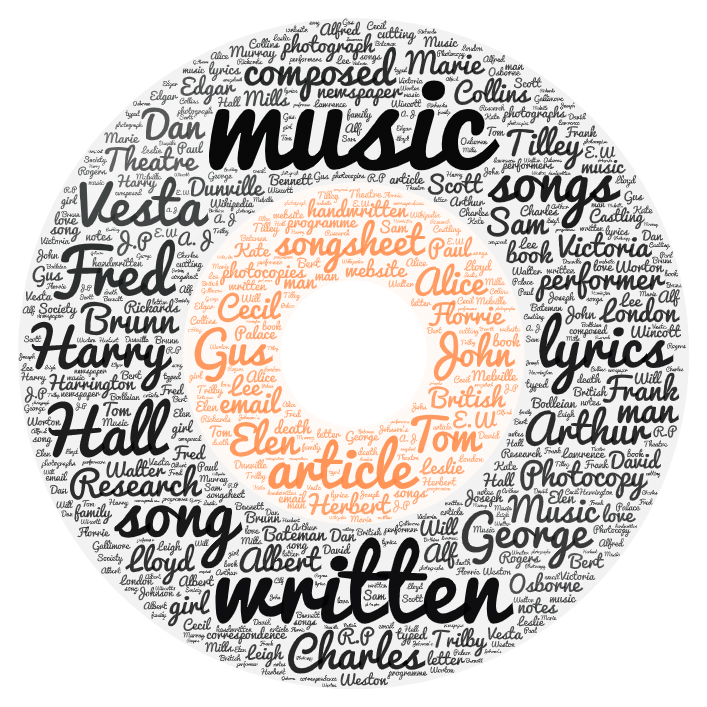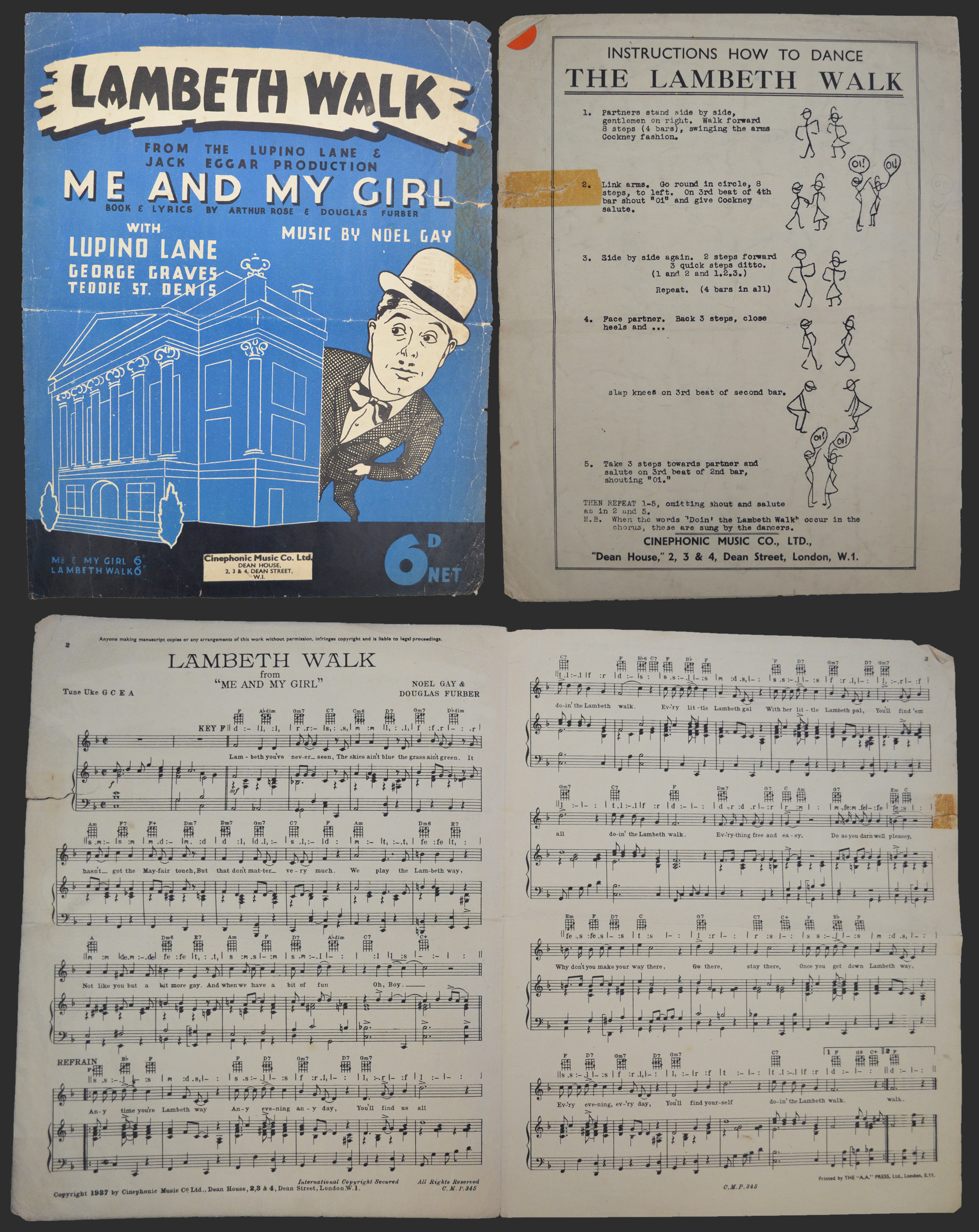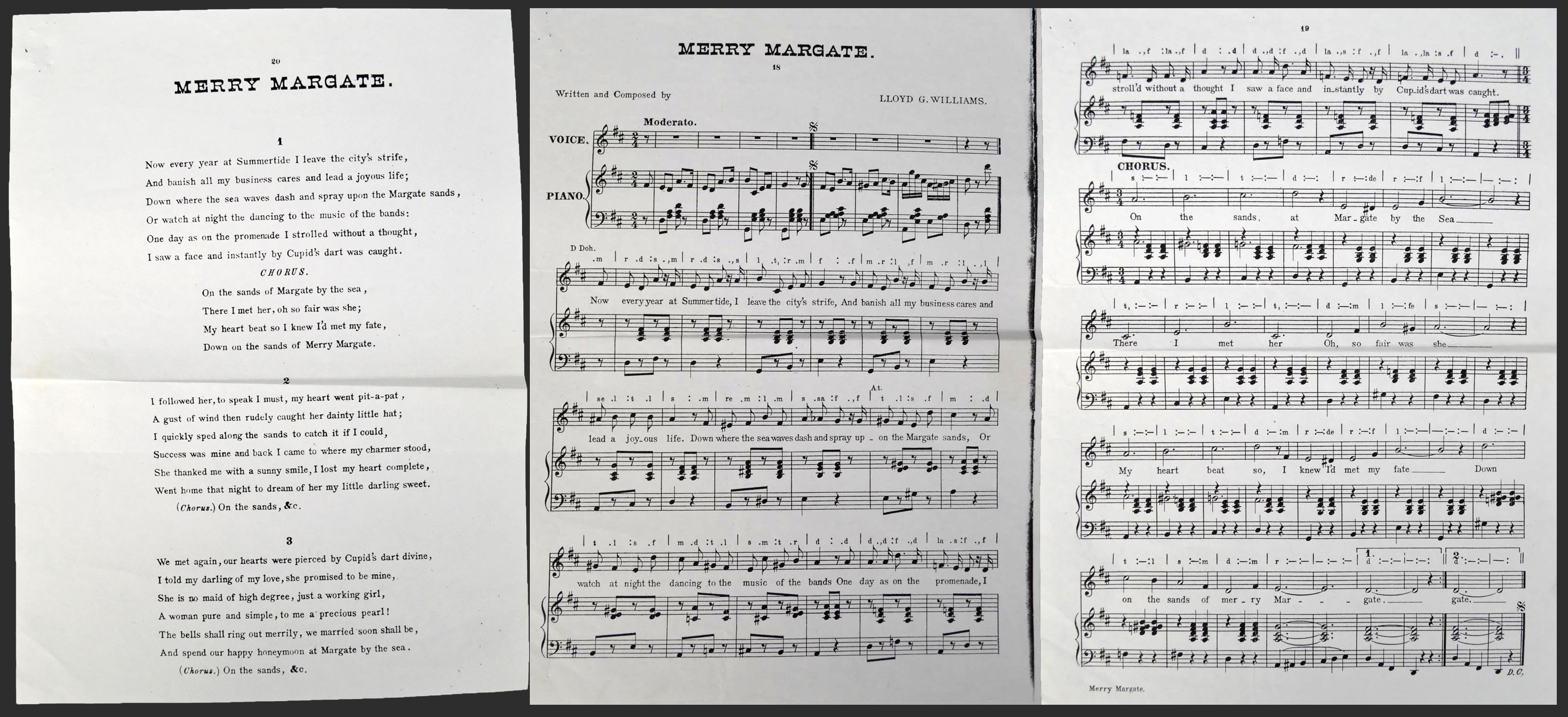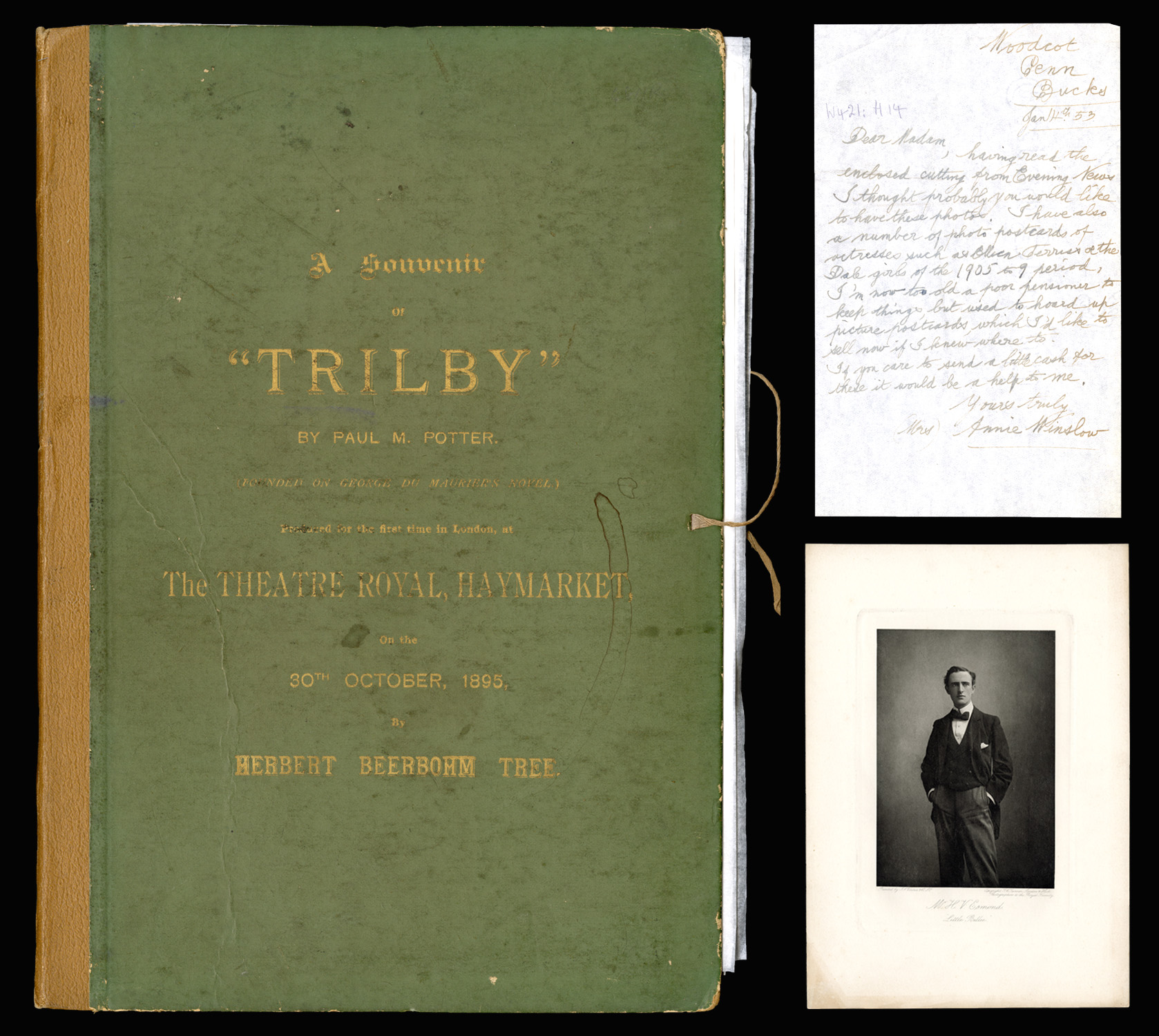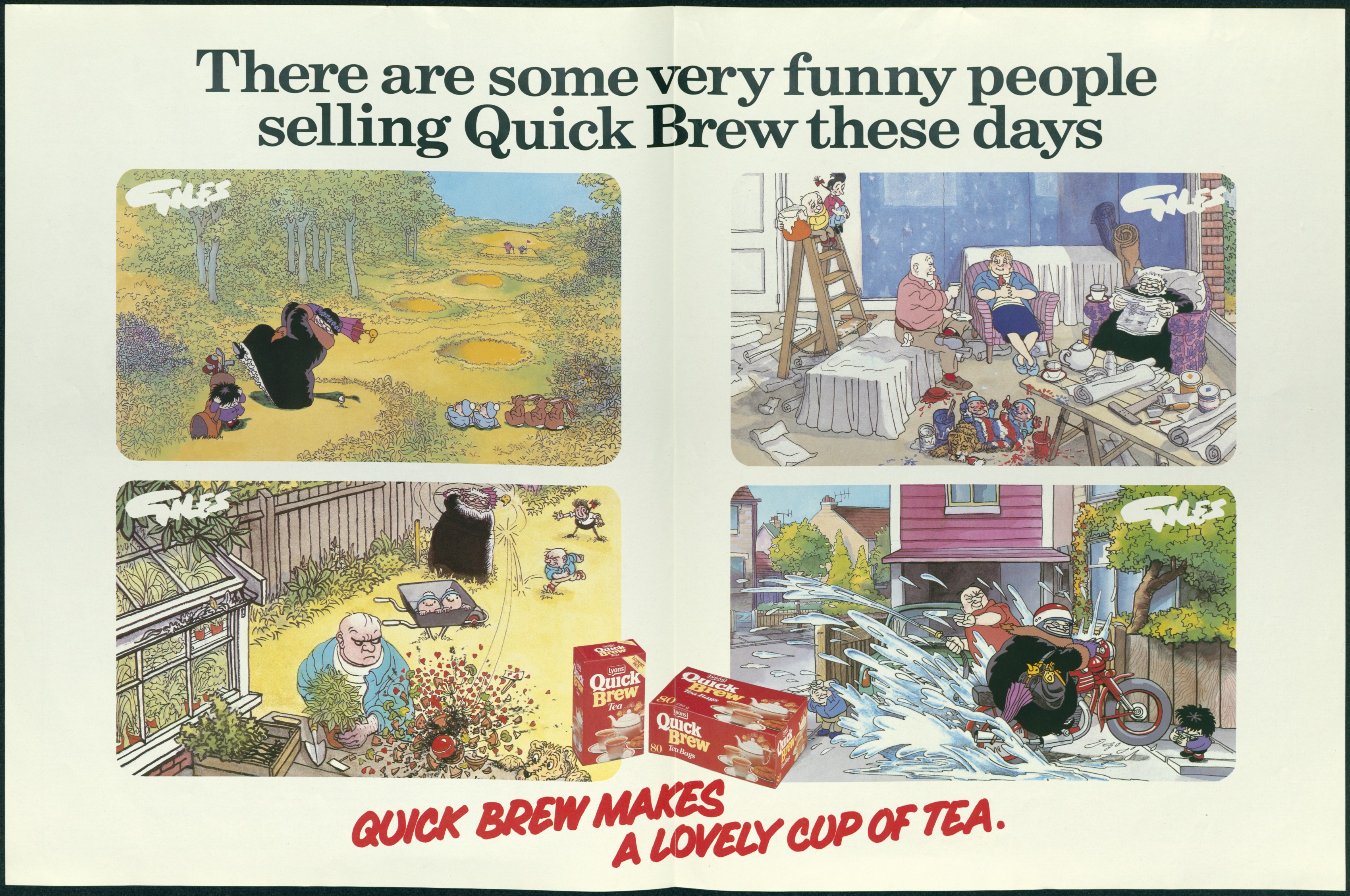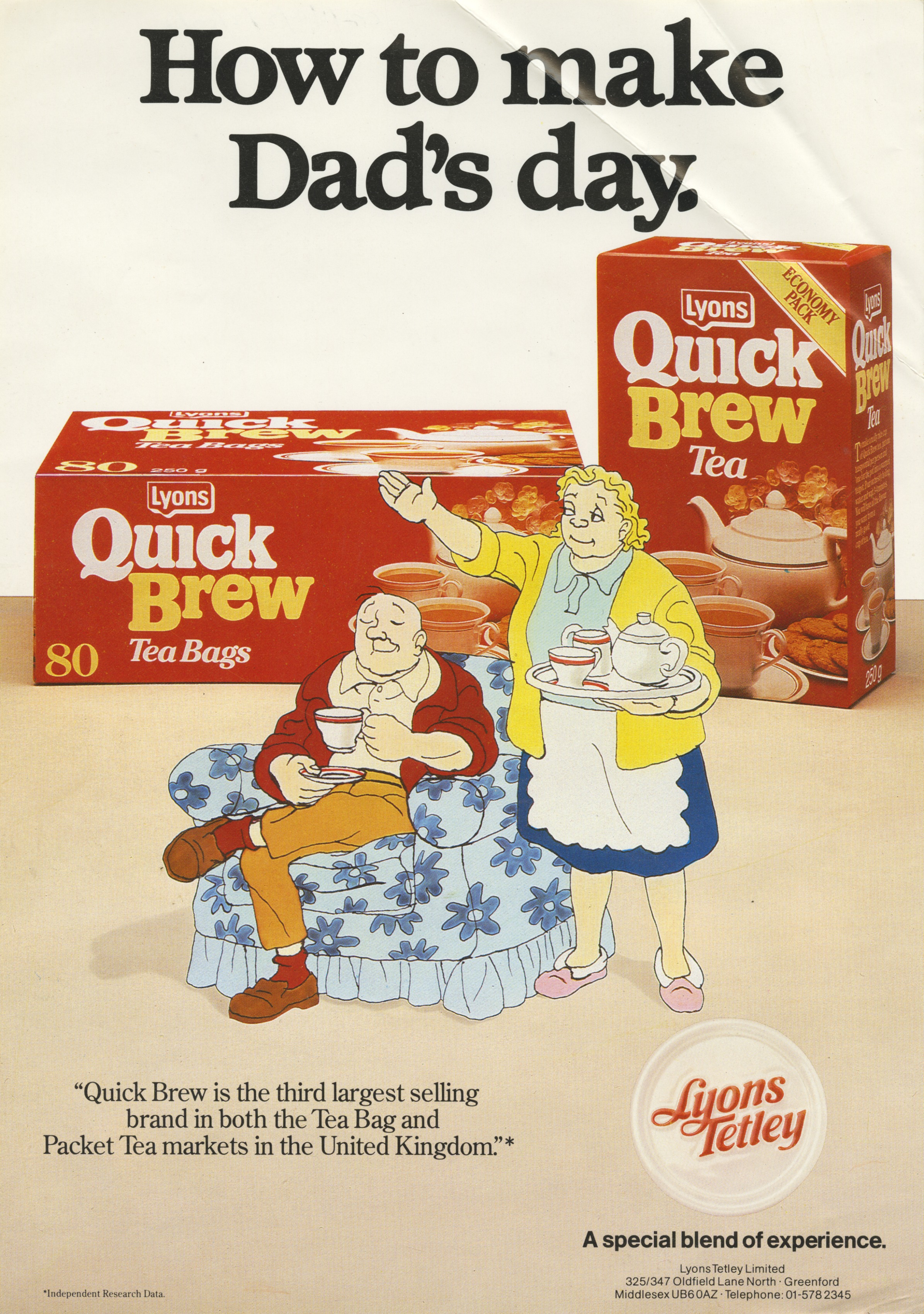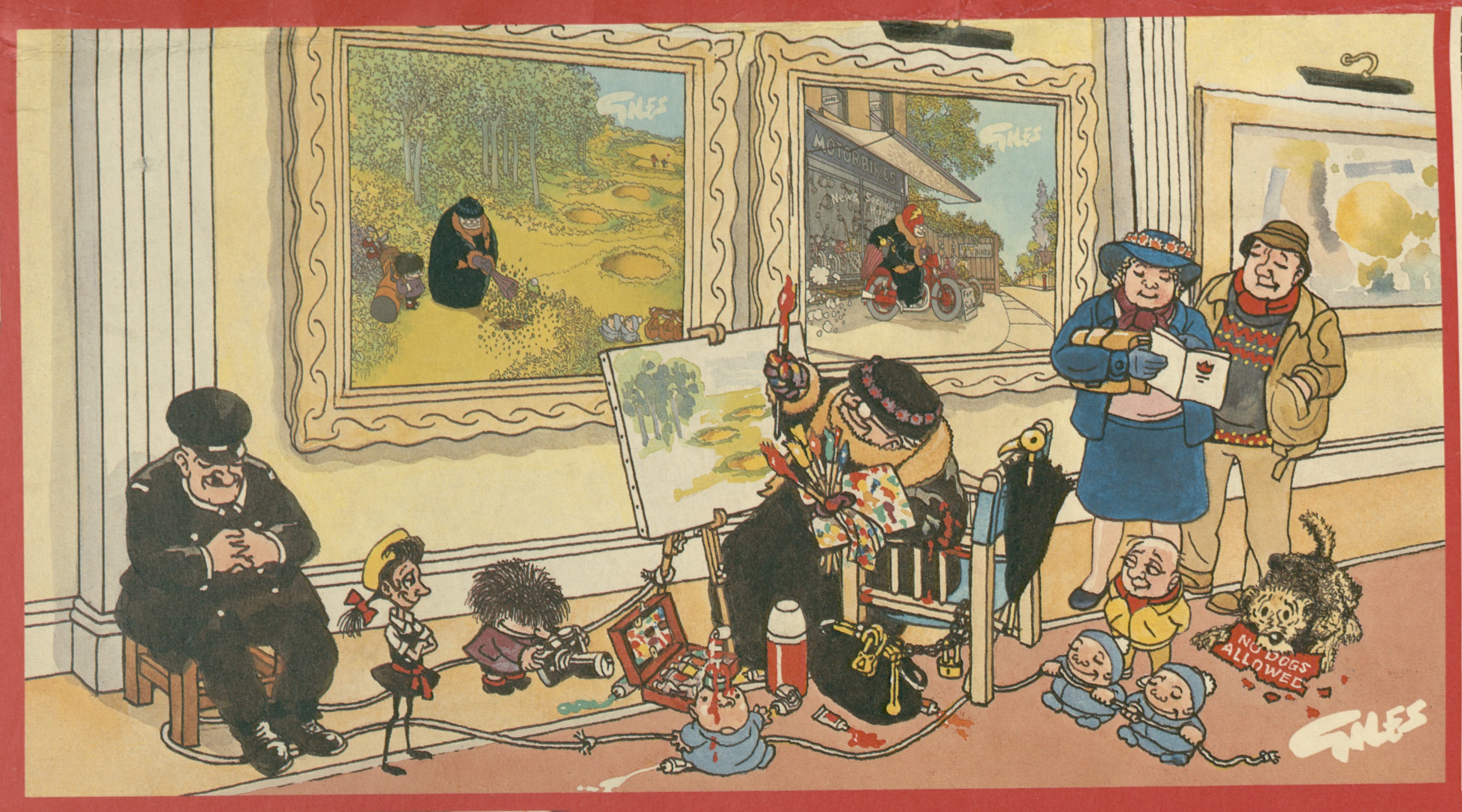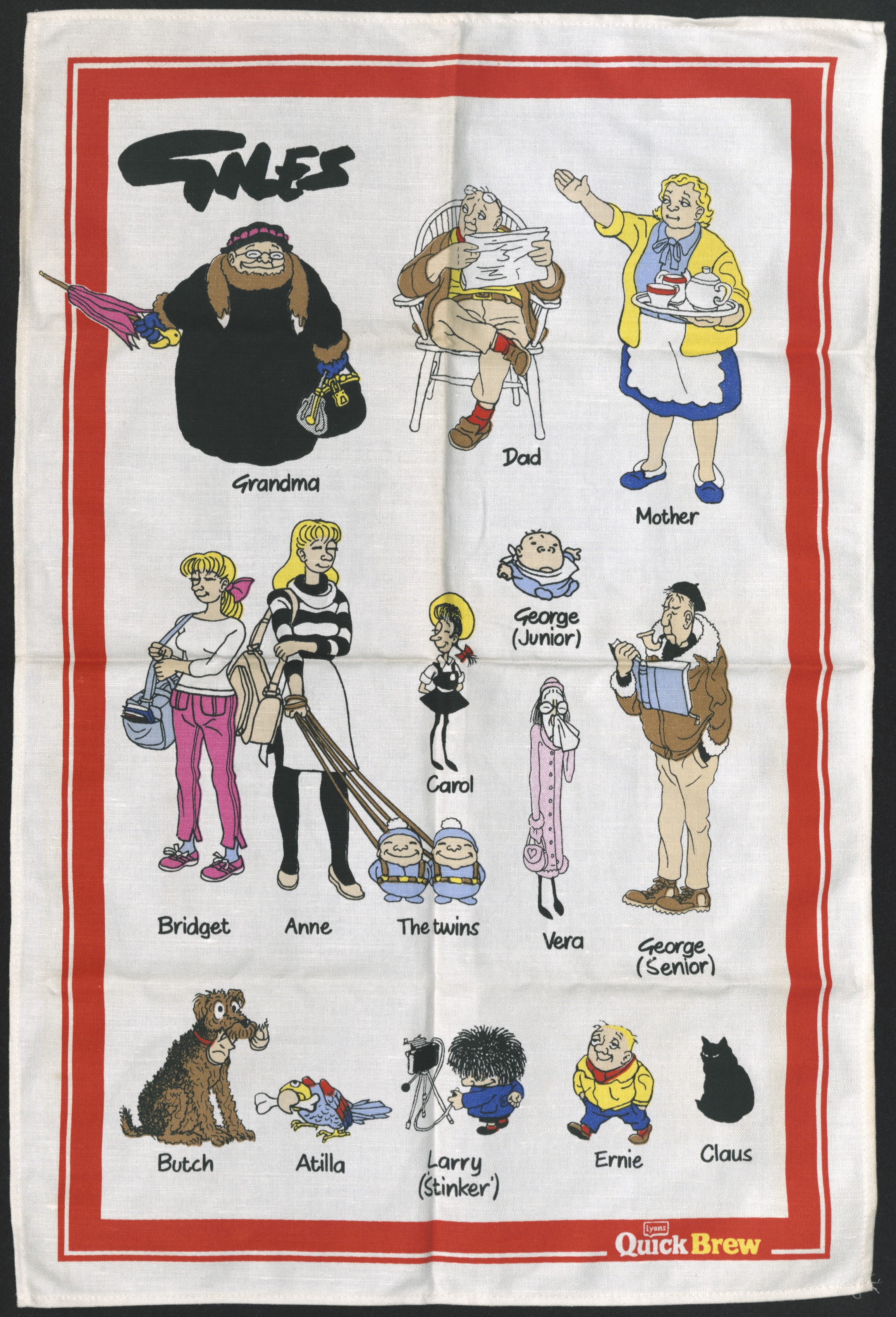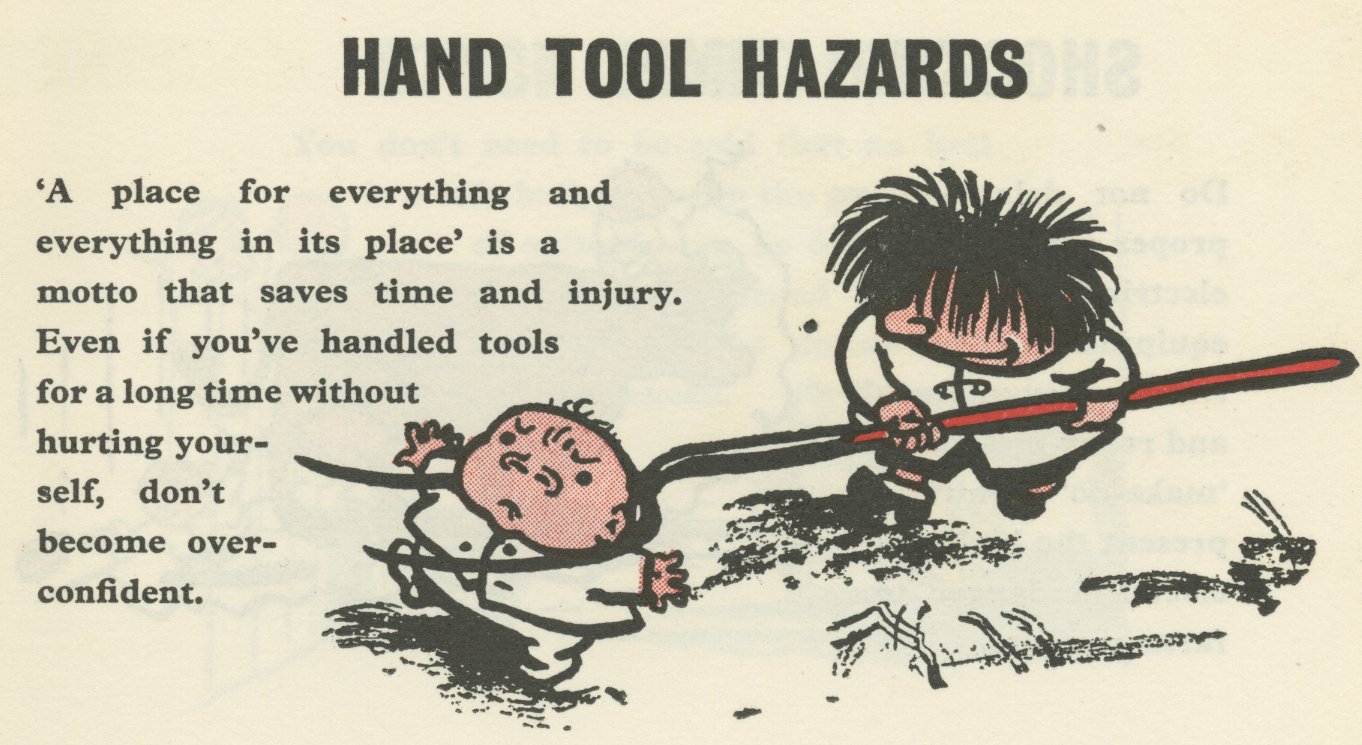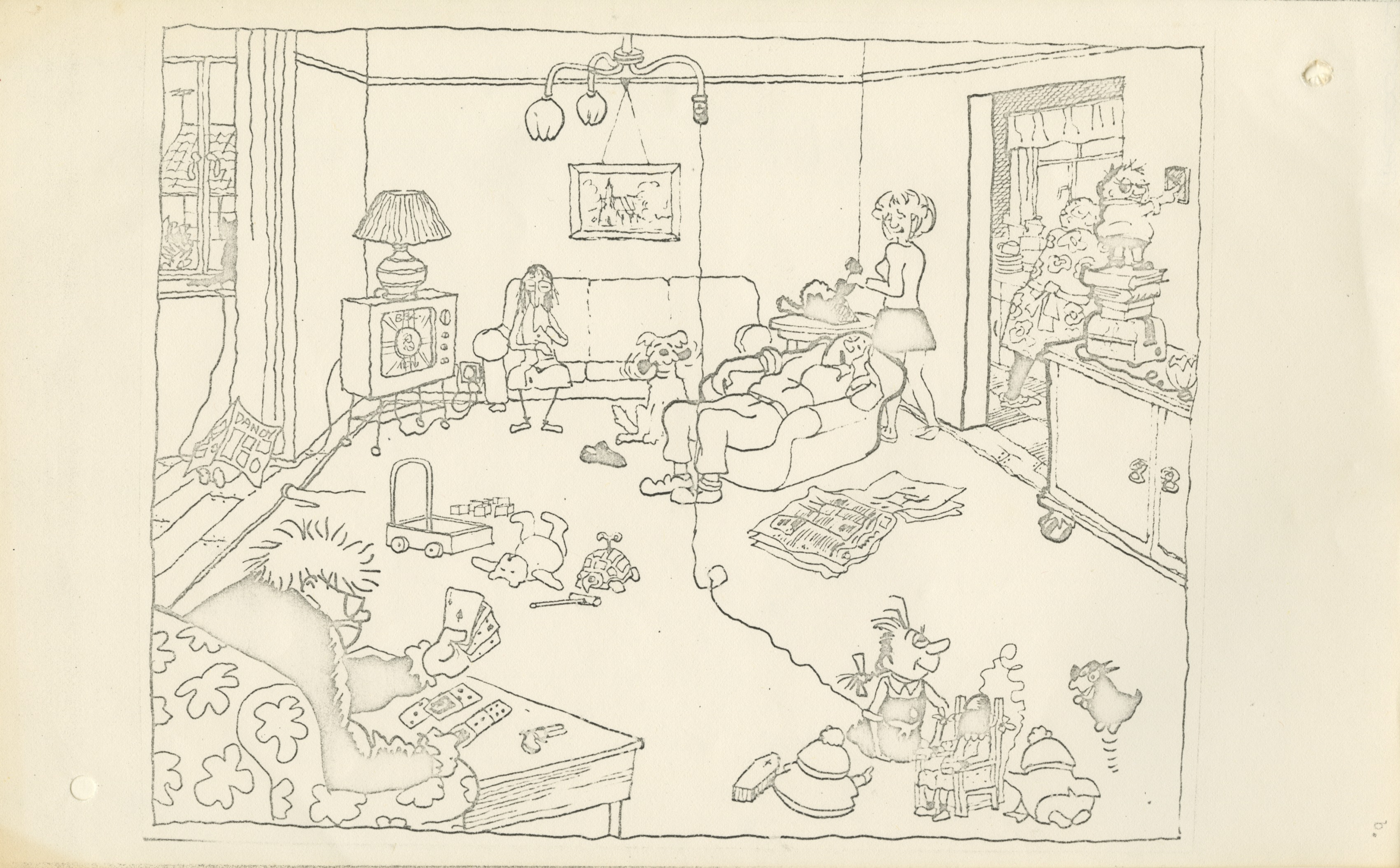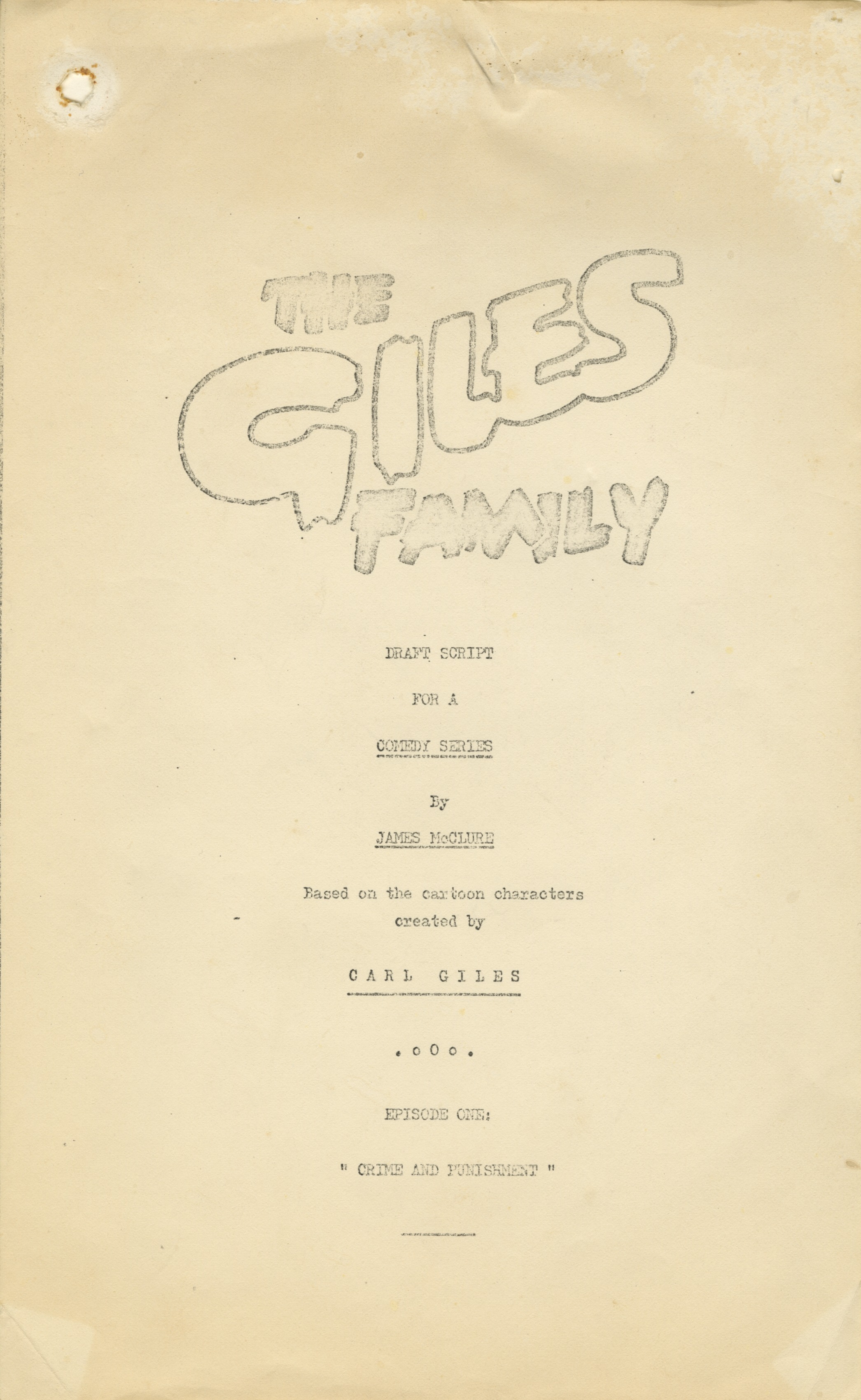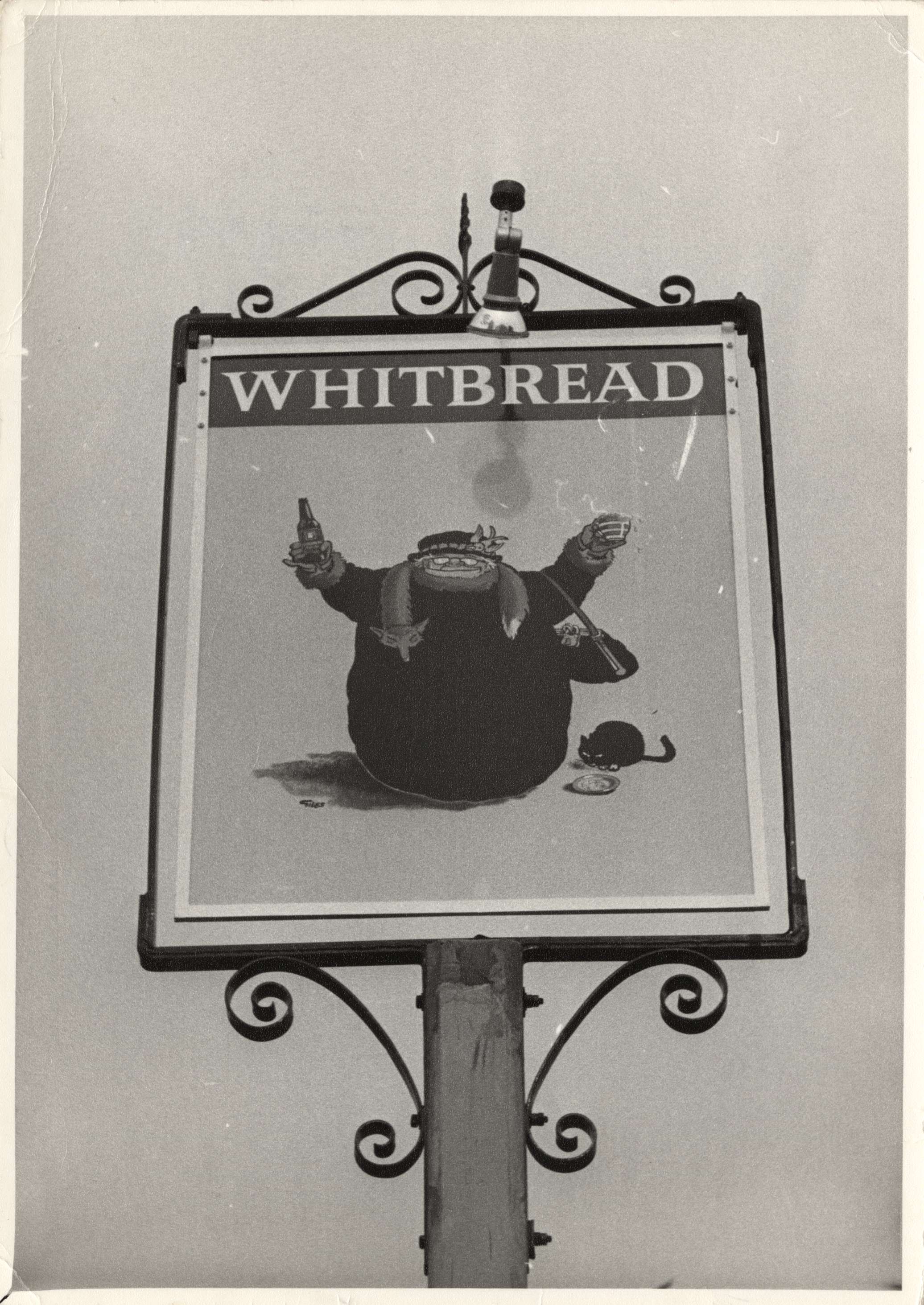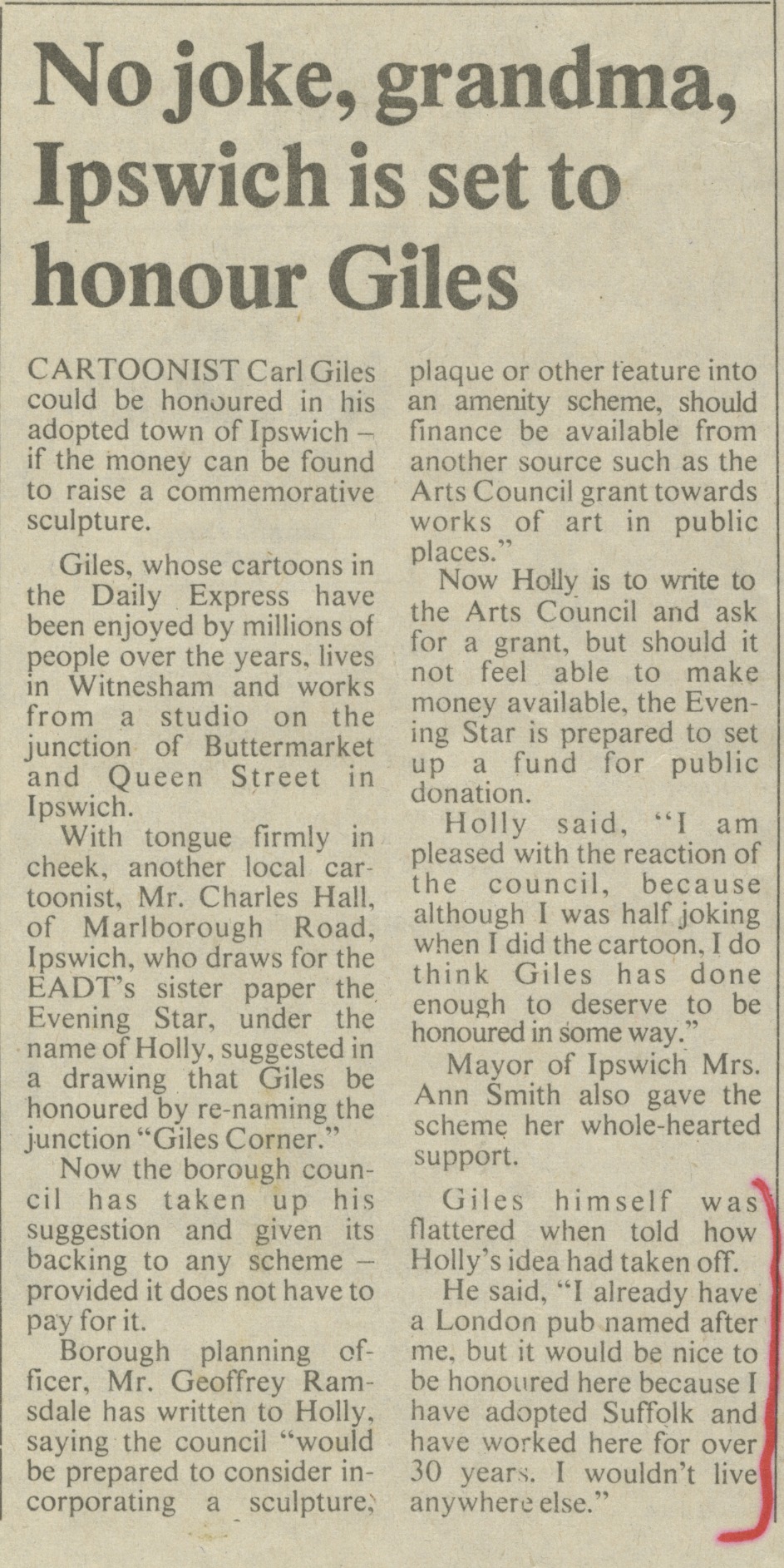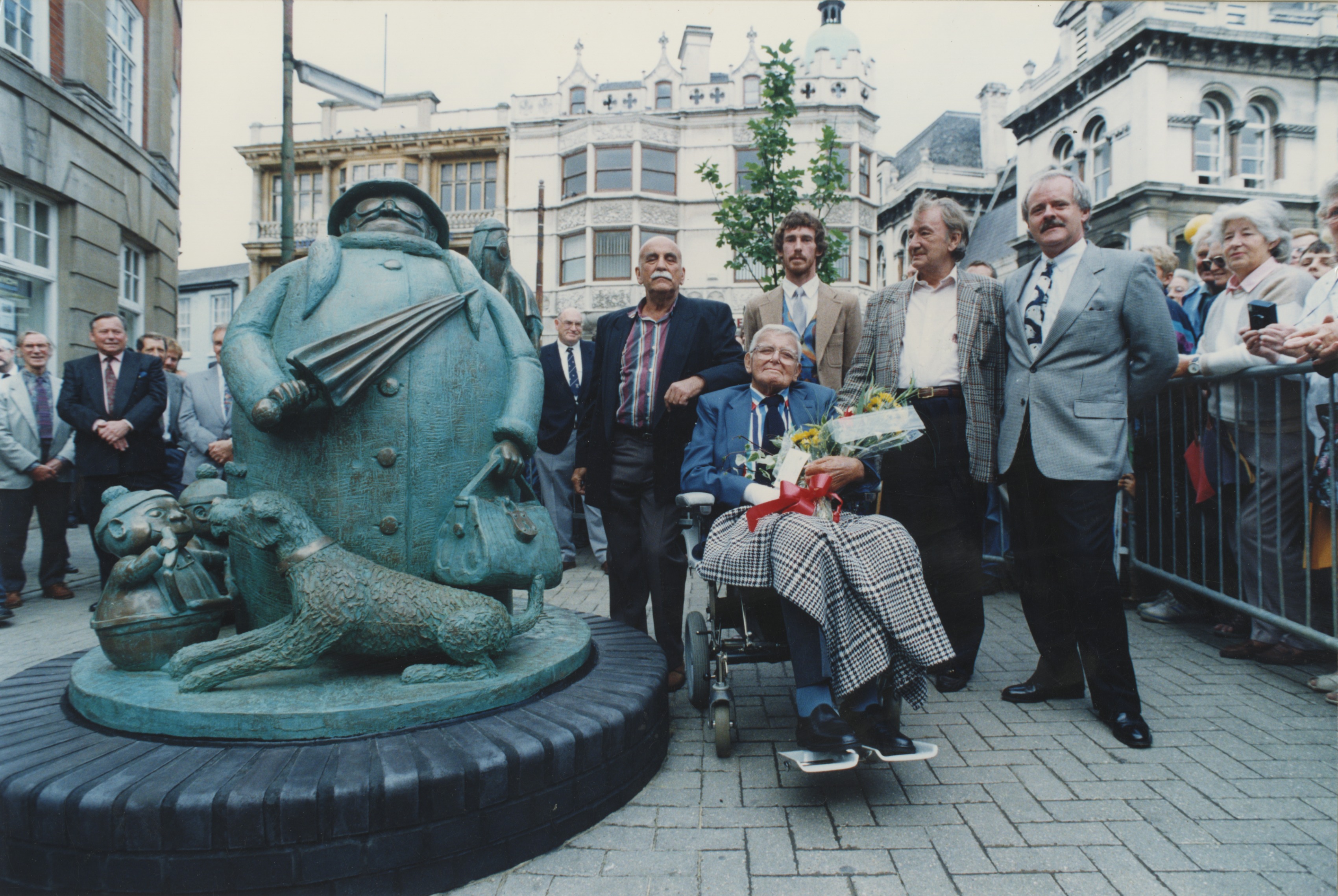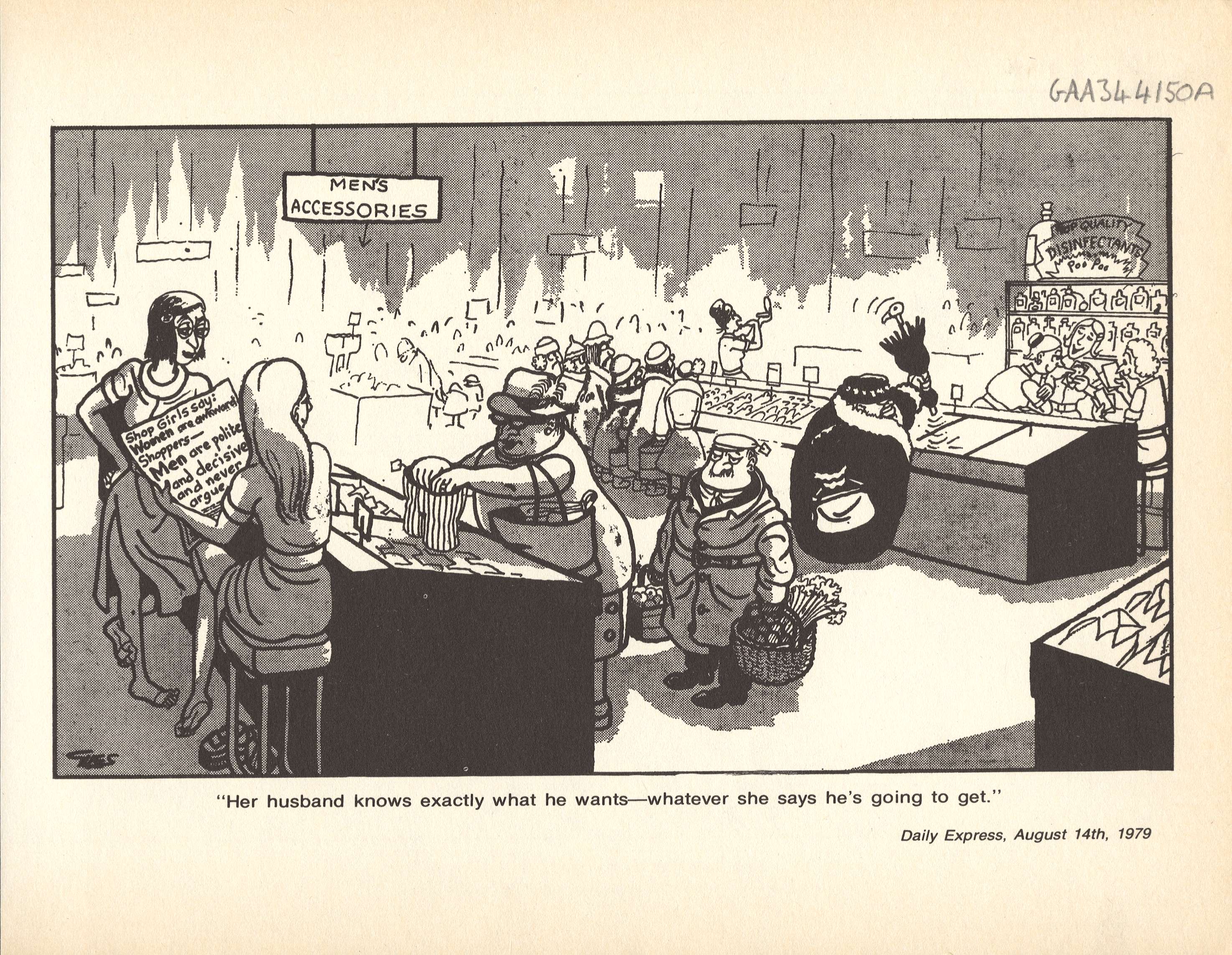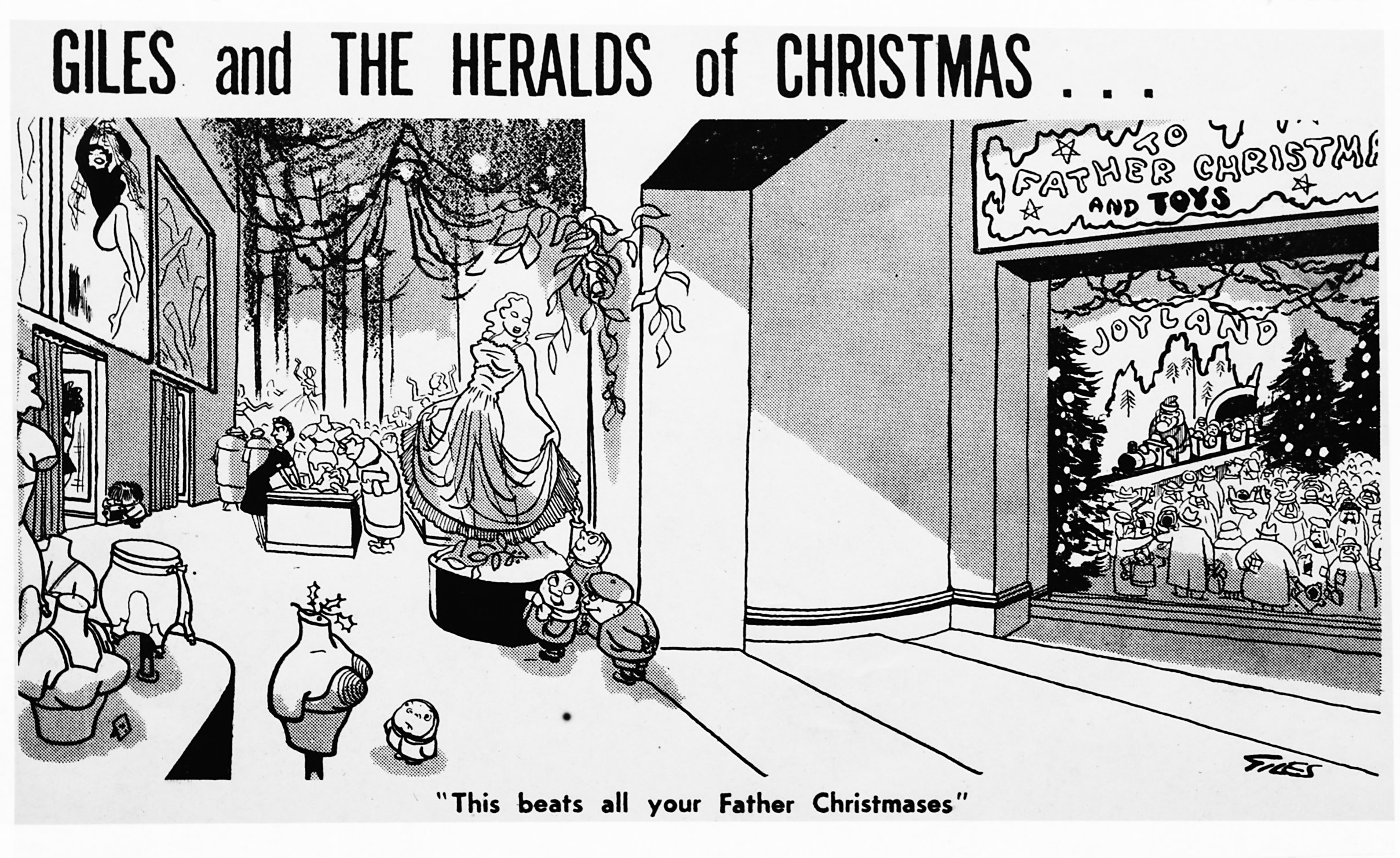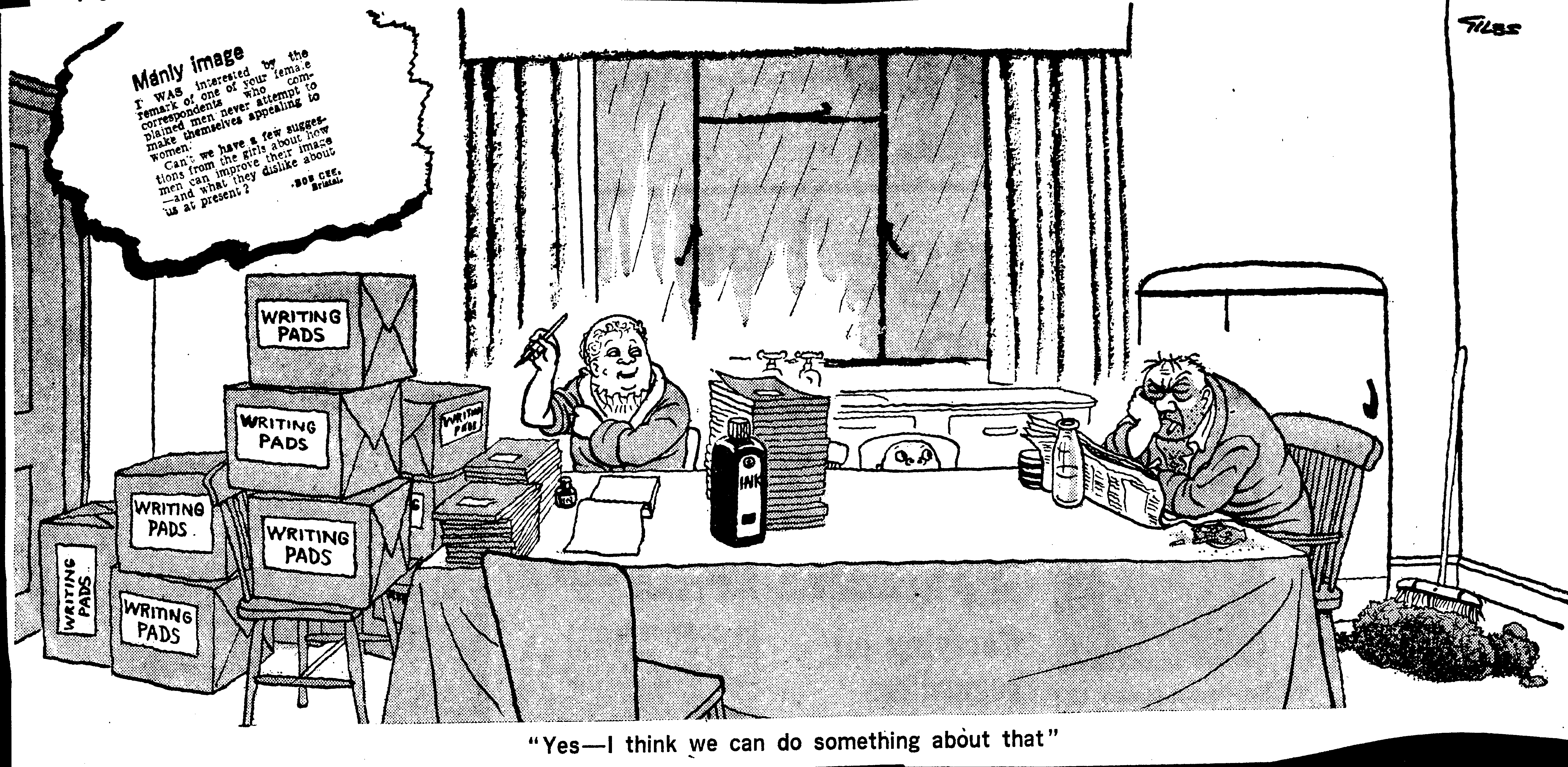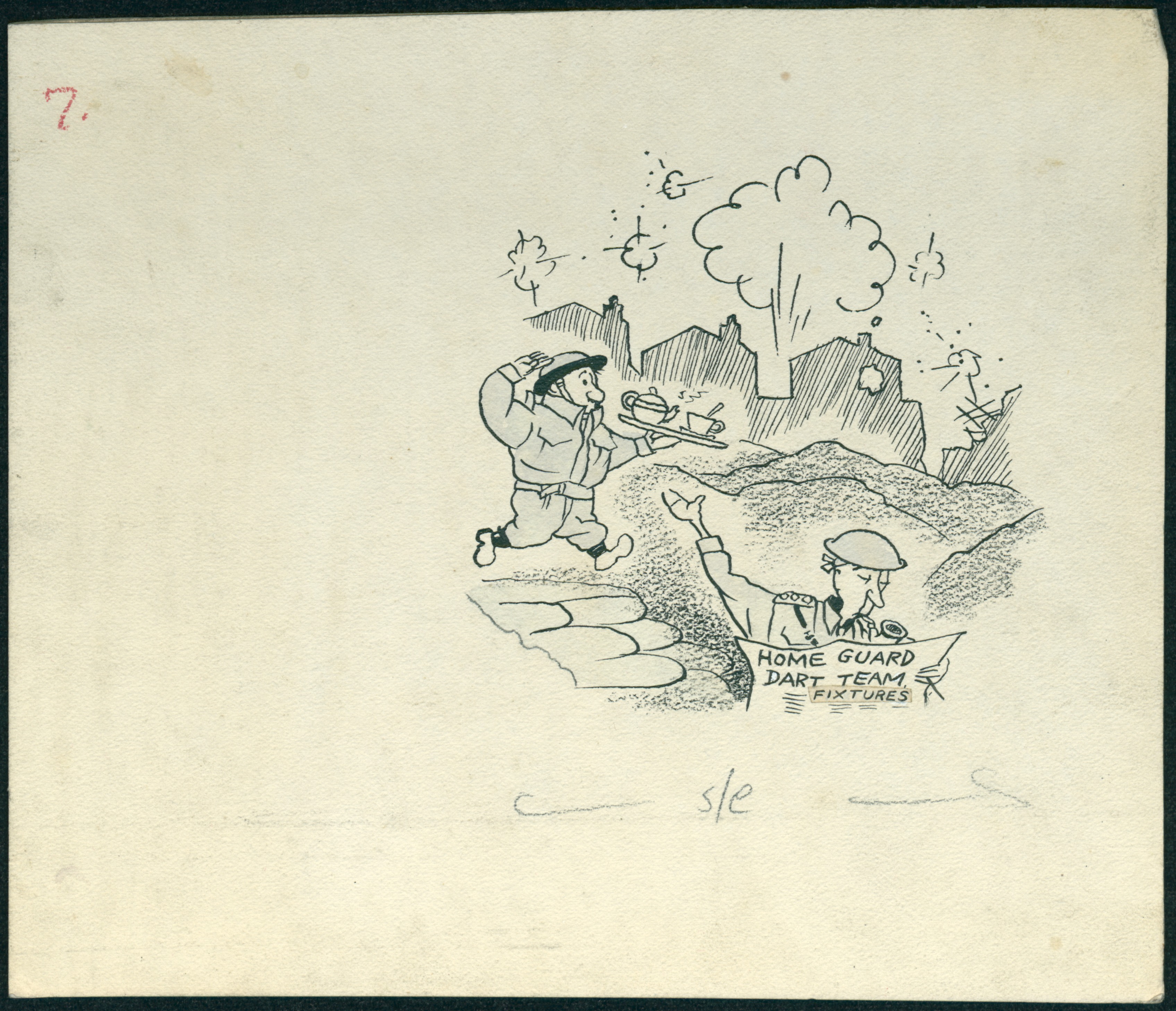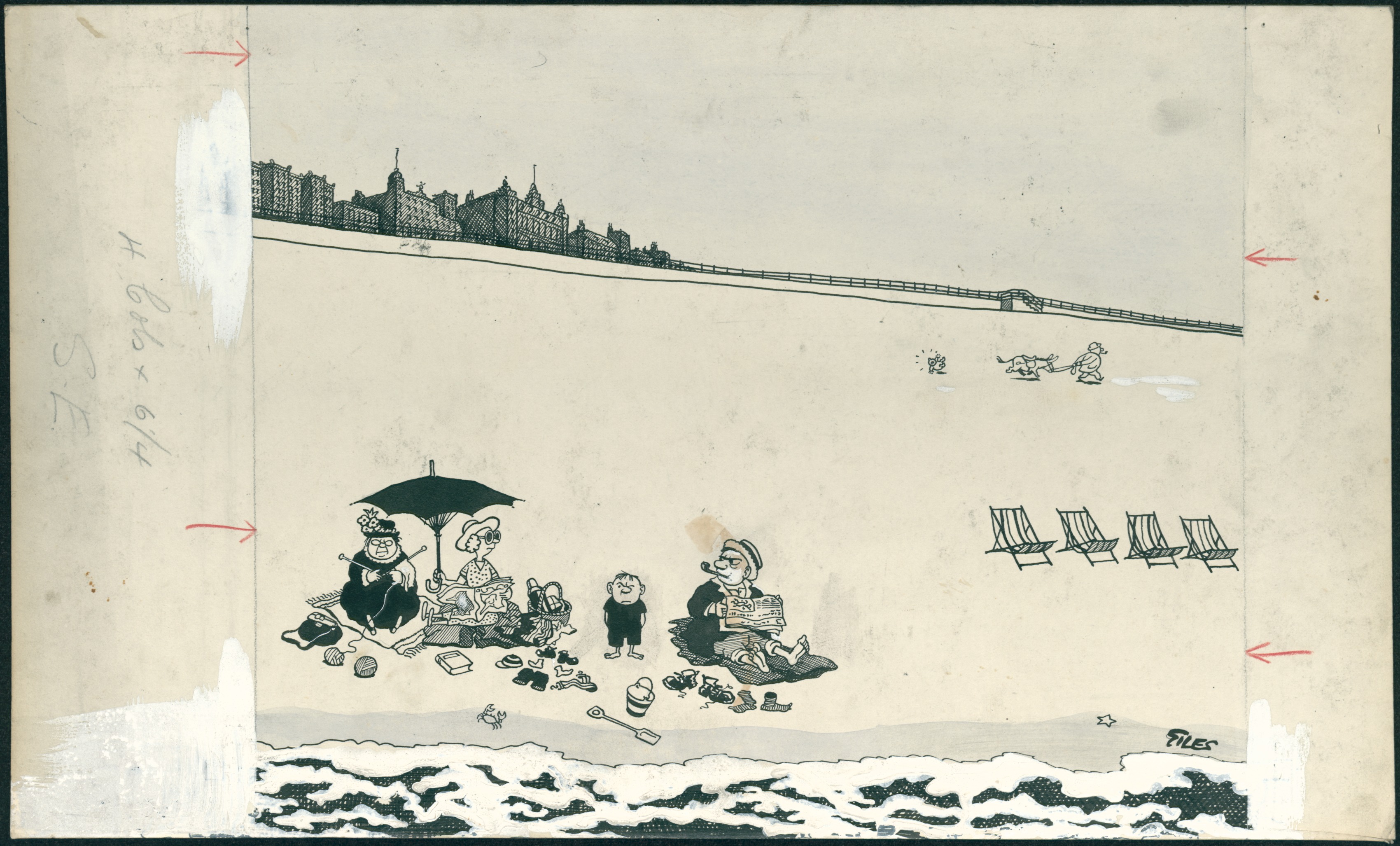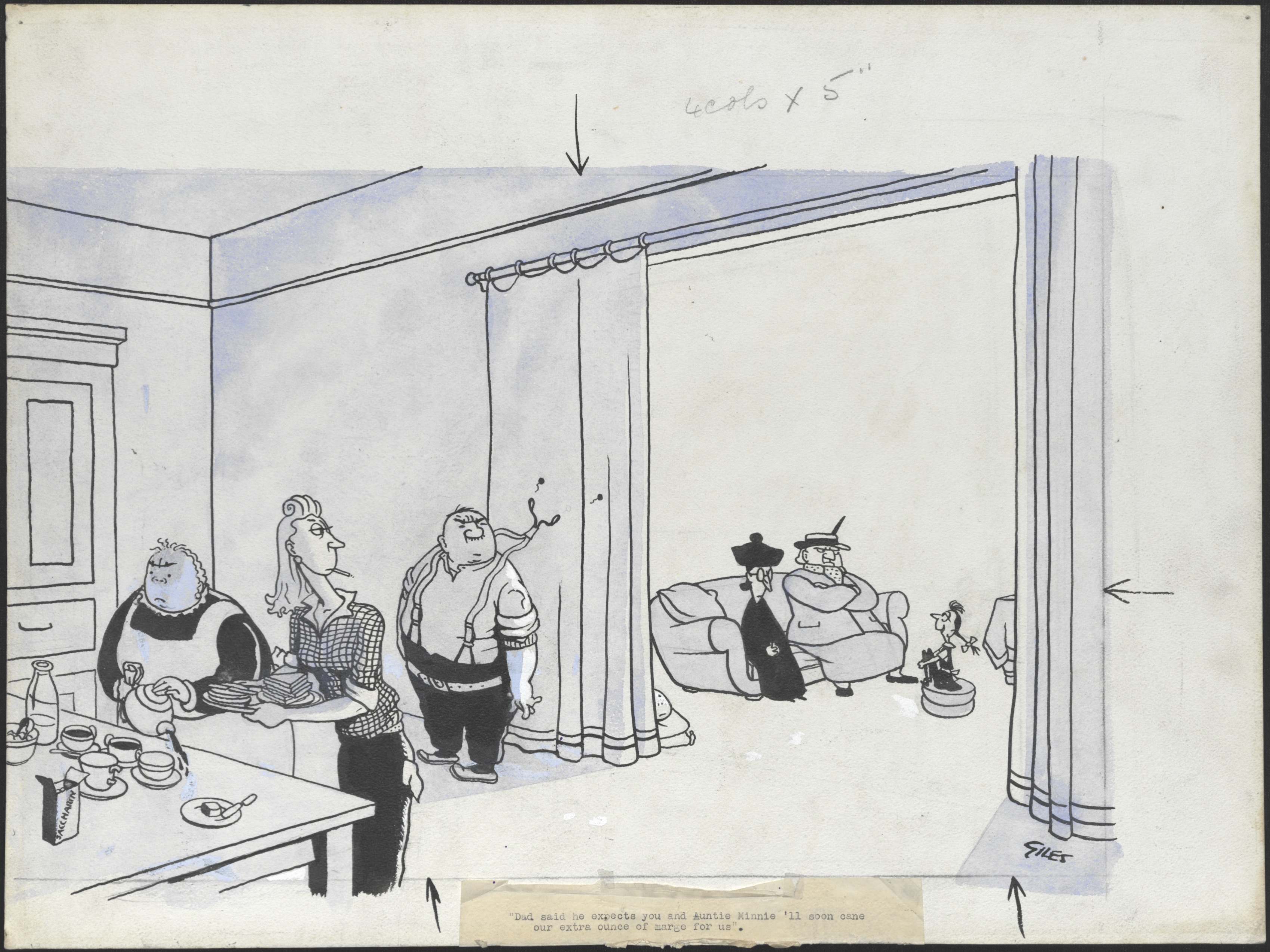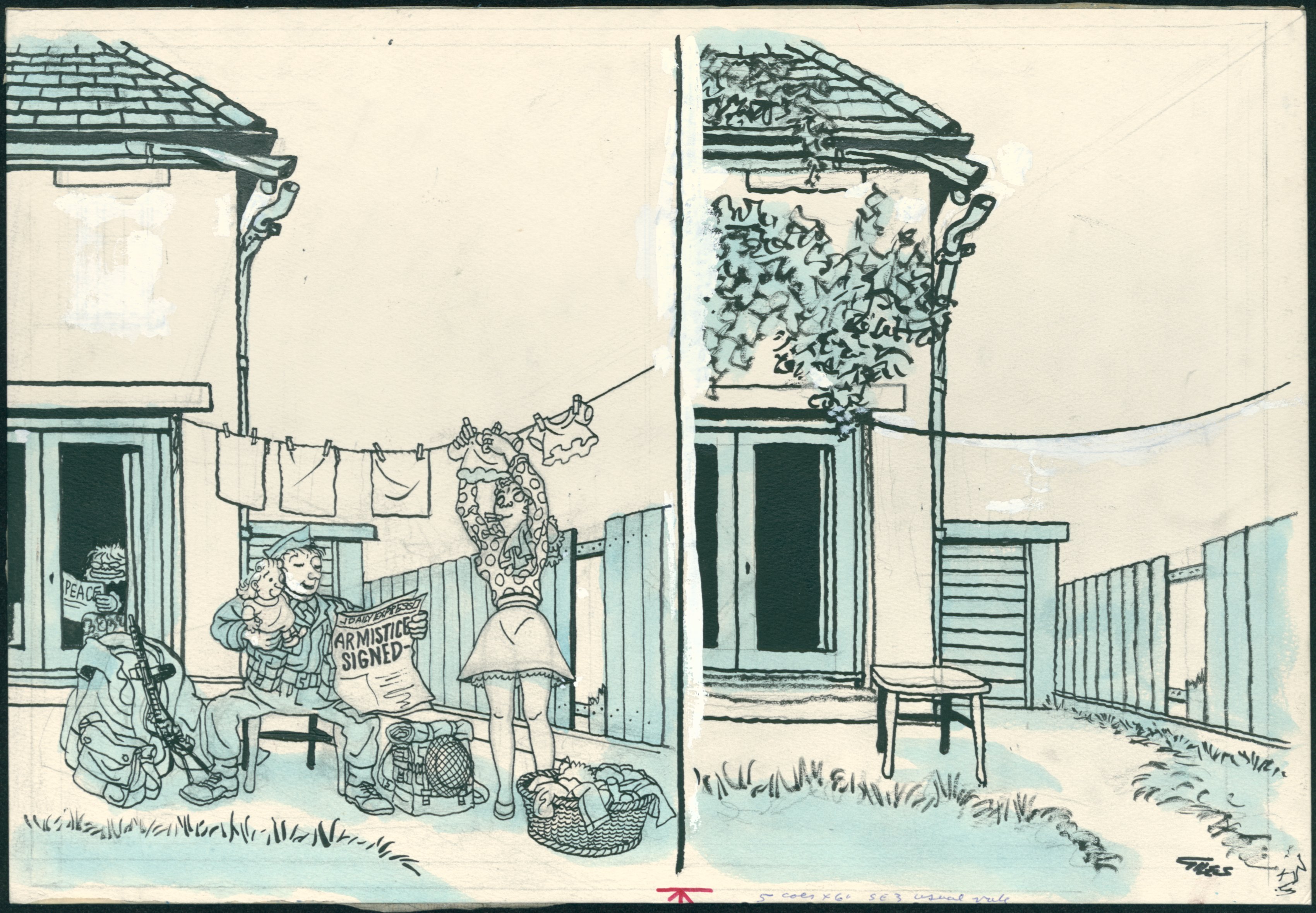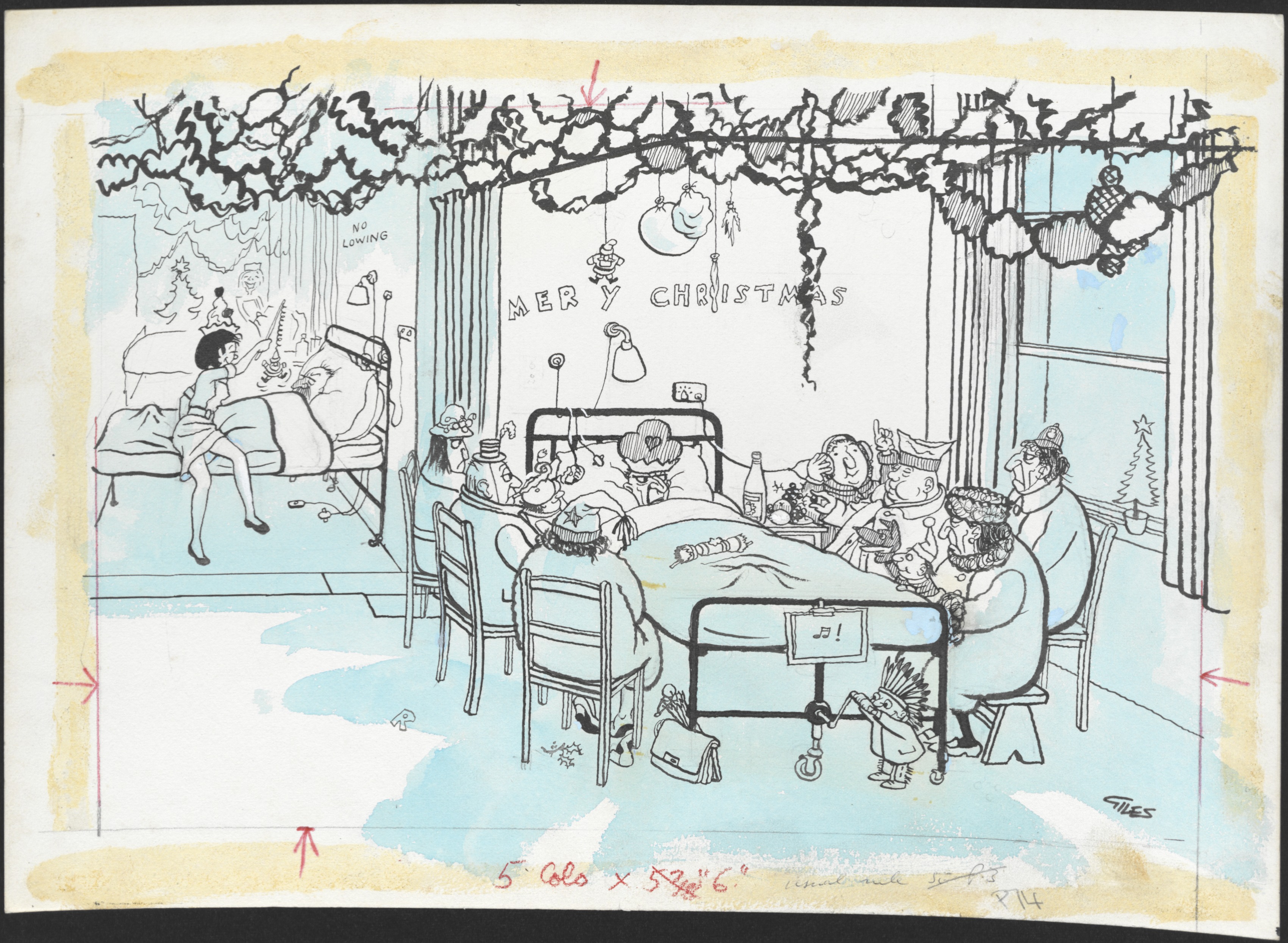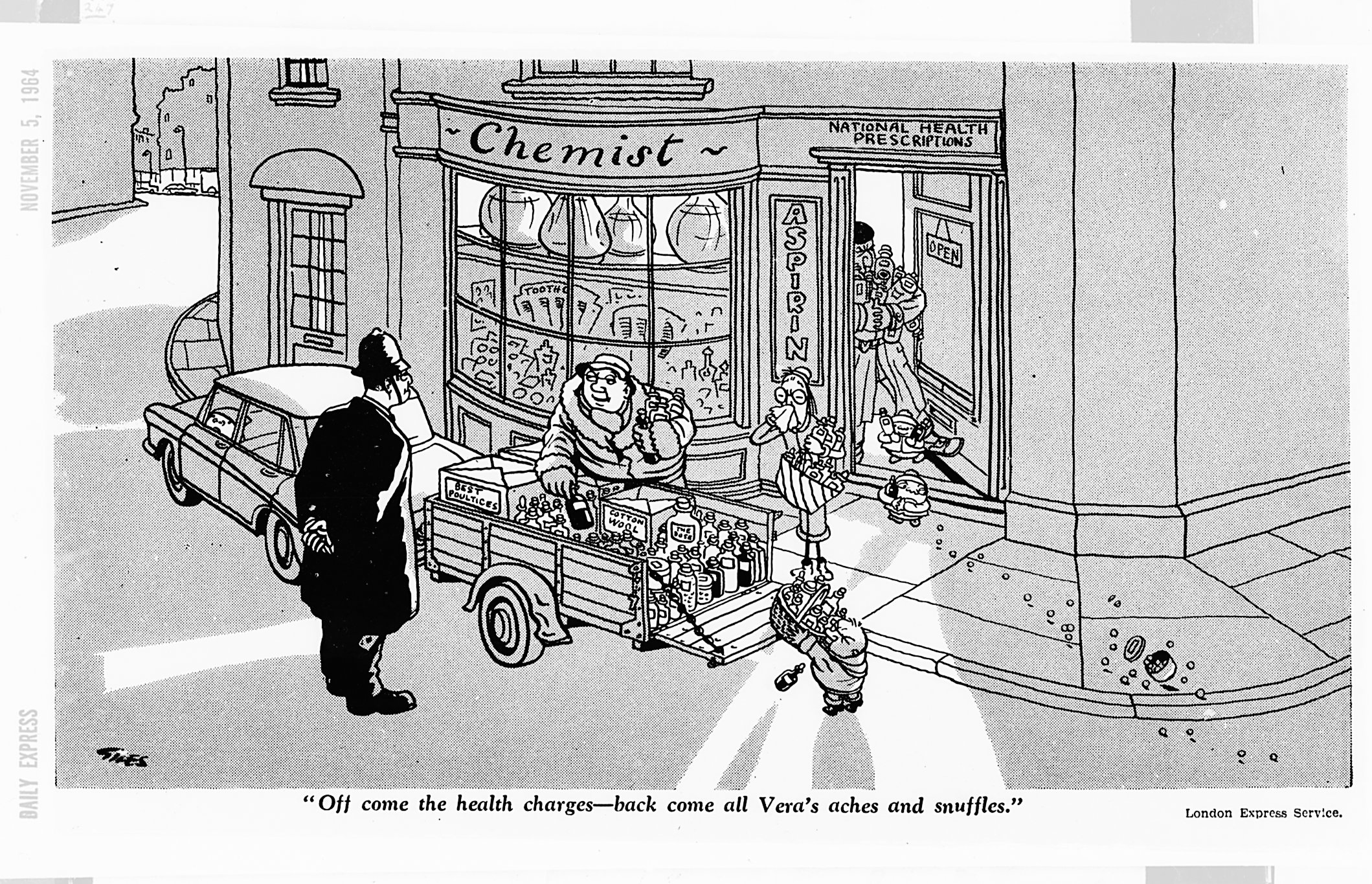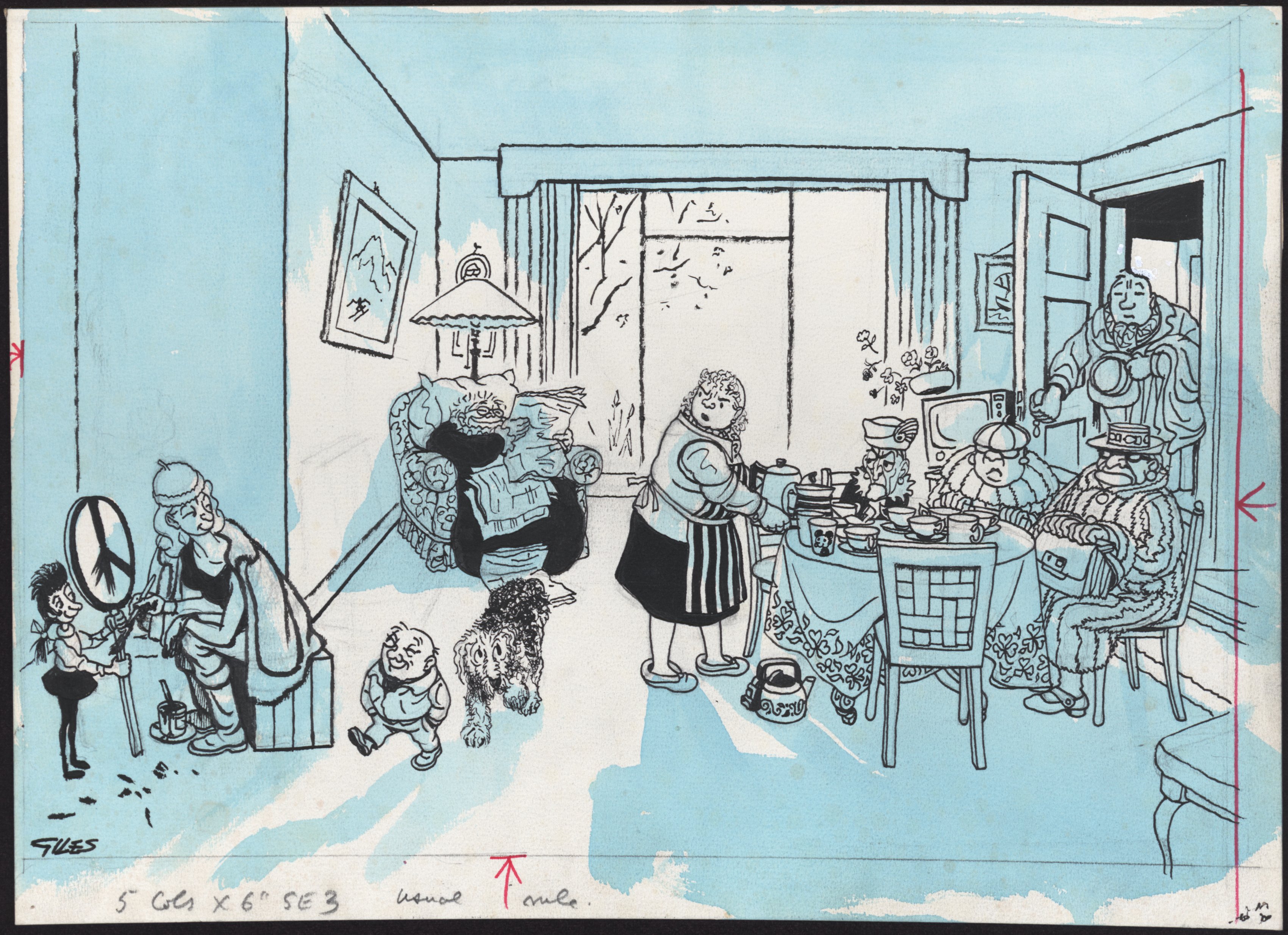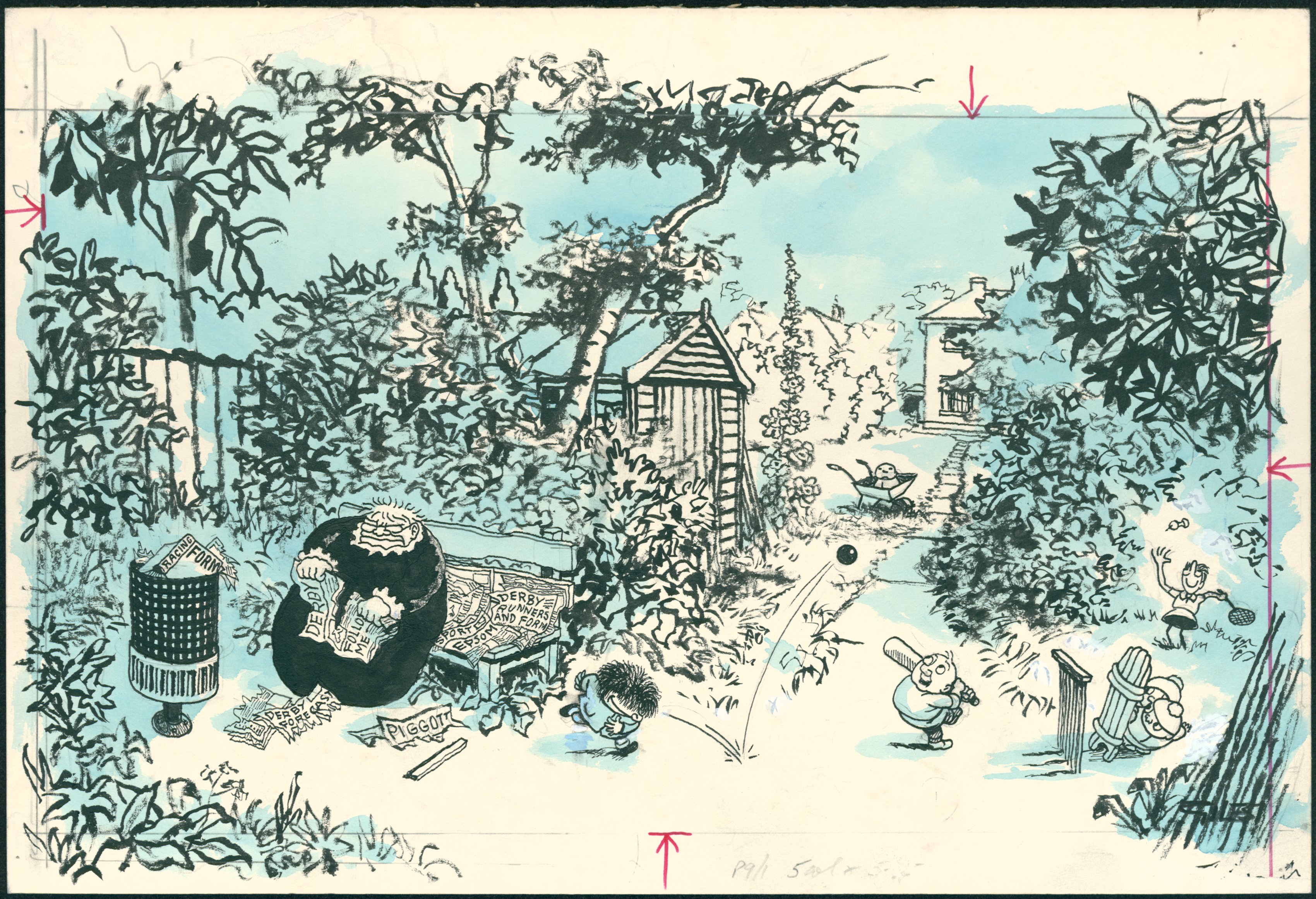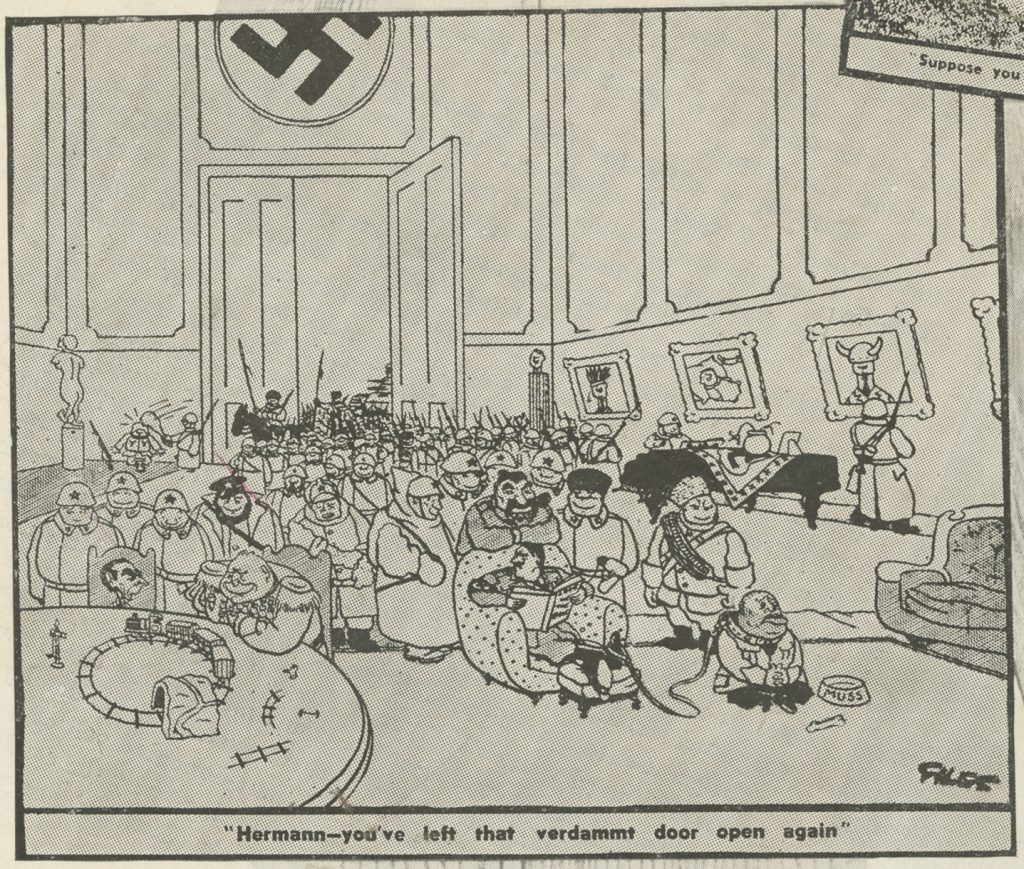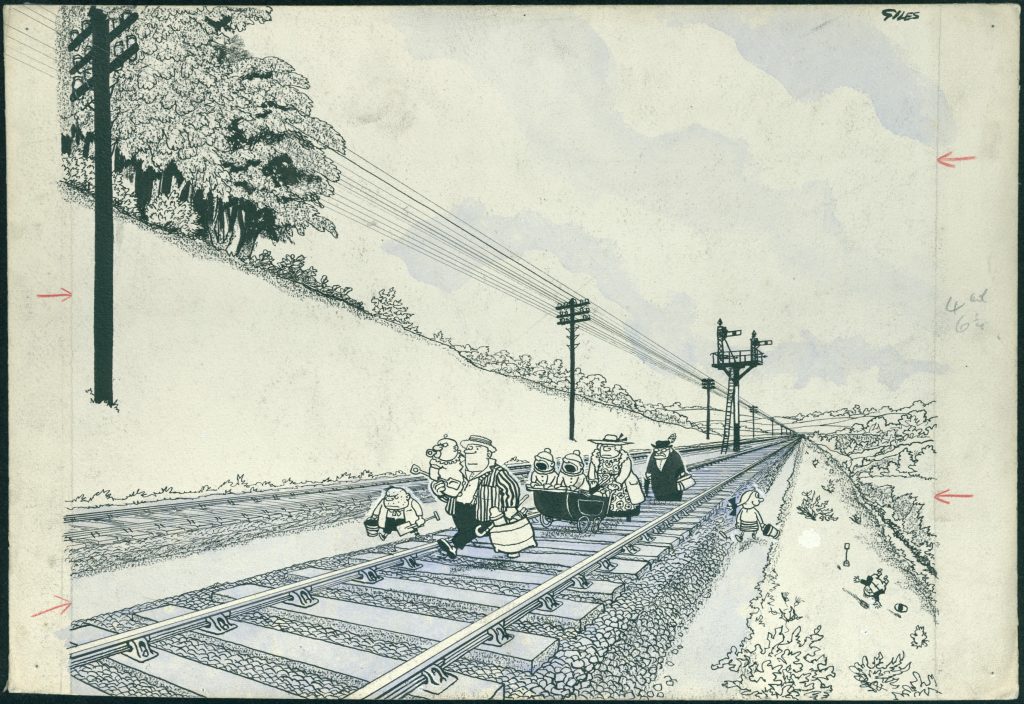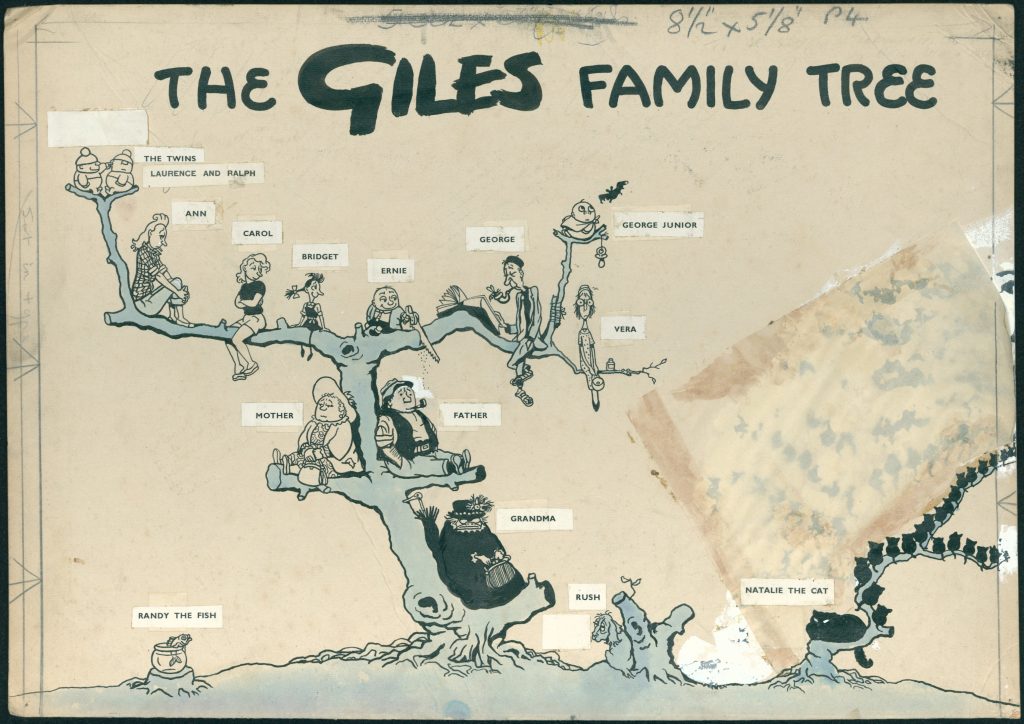
GA5720: Front cover artwork for the 42nd Giles annual, 1988.
This is the second in our series of blog posts celebrating the 75th anniversary of the Giles Family, drawing on the riches of the Carl Giles Archive, which has been part of the British Cartoon Archive since 2005. This series is in lieu of a physical exhibition in our Gallery space, owing to the Covid-19 pandemic.
In this post we’re going to tell you “Who’s Who” in the Giles Family! We’ve included lots of images here to give you a real taste of the characters. If it leaves you wanting more, just take a look through our archive online!!
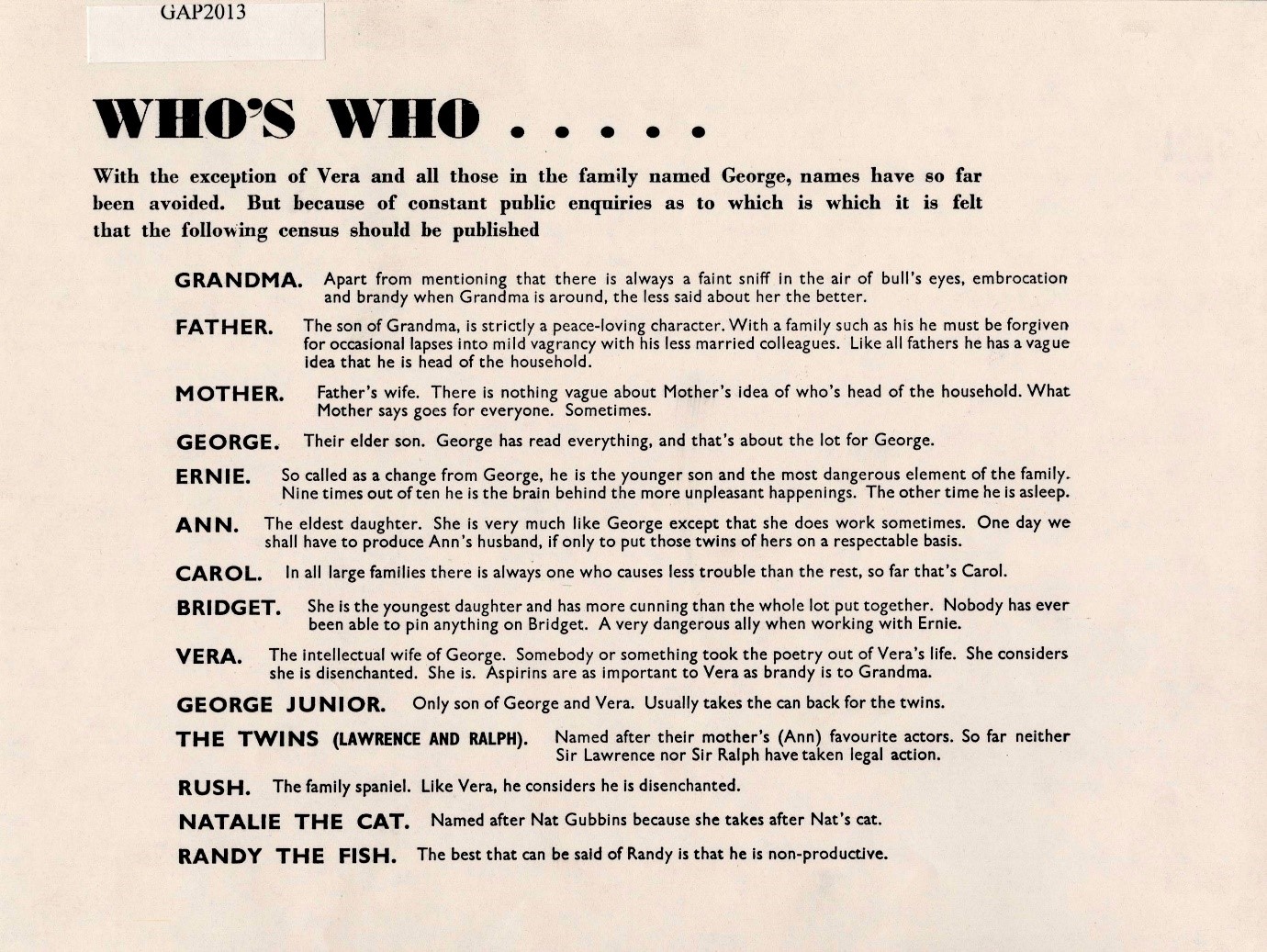
GAP2013: The Giles Family Tree, Daily Express, 23 Nov 1951.
Grandma
Probably the most famous and prolific character, Grandma Giles is the hard-drinking, bet-placing, grumpy-looking star of the family.

GA3715: Published caption: “Know why I think this betting slip is a forgery? Because I can’t
remember giving anyone 500-1 against Manchester United and I don’t spell Cup Final with a K”, published by Sunday Express, 22 May 1977.
Grandma can usually be found wearing her trademark black coat up to the neck, fox stole, with her hat pulled down over her head and her trusty umbrella and handbag in hand. She was rarely given a voice in cartoons, but appeared in over 1400 of them over the years.

Left – GA5567: “Watch it! I can get you 2 1/2 years inside if you hit me just because I nicked your pension book”, published Sunday Express, 15 Nov 1987.
Right – GA5721: Back cover artwork for the 44th Giles annual, 1990.
Imagined to have been born as early as 1886, Grandma was a strict disciplinarian with extreme opinions; from being a royalist, to supporting hanging, to having a portrait of Lenin on her bedroom wall! Despite these… interesting… quirks of character, she is well-loved by fans of Giles’ work, and Giles was also incredibly fond of her. In fact, you could say there is some resemblance of Giles himself in Grandma…

Left – GAPH00136: Black and white photo of Giles in the snow at Hillbrow Farm holding packaged artwork being collected by helicopter, 1987.
Right – GAPA0004: Front cover of ‘Sunday Express Magazine’ advertising article ‘Giles: The man who gave birth to Grandma’, published by Sunday Express, 16 Feb 1986.
Giles did admit that he occasionally considered killing off Grandma over the years, but found that if he left her out of the cartoons for a few days he would receive complaints from Daily Express readers asking when she was going to reappear!
The last cartoon featuring Grandma that we have in the archive was published in the Sunday Express, on 2nd June, 1991. In this cartoon she is uncharacteristically dressed in a winter fur coat, scarf and woolly hat, a comment on the cold June of 1991.
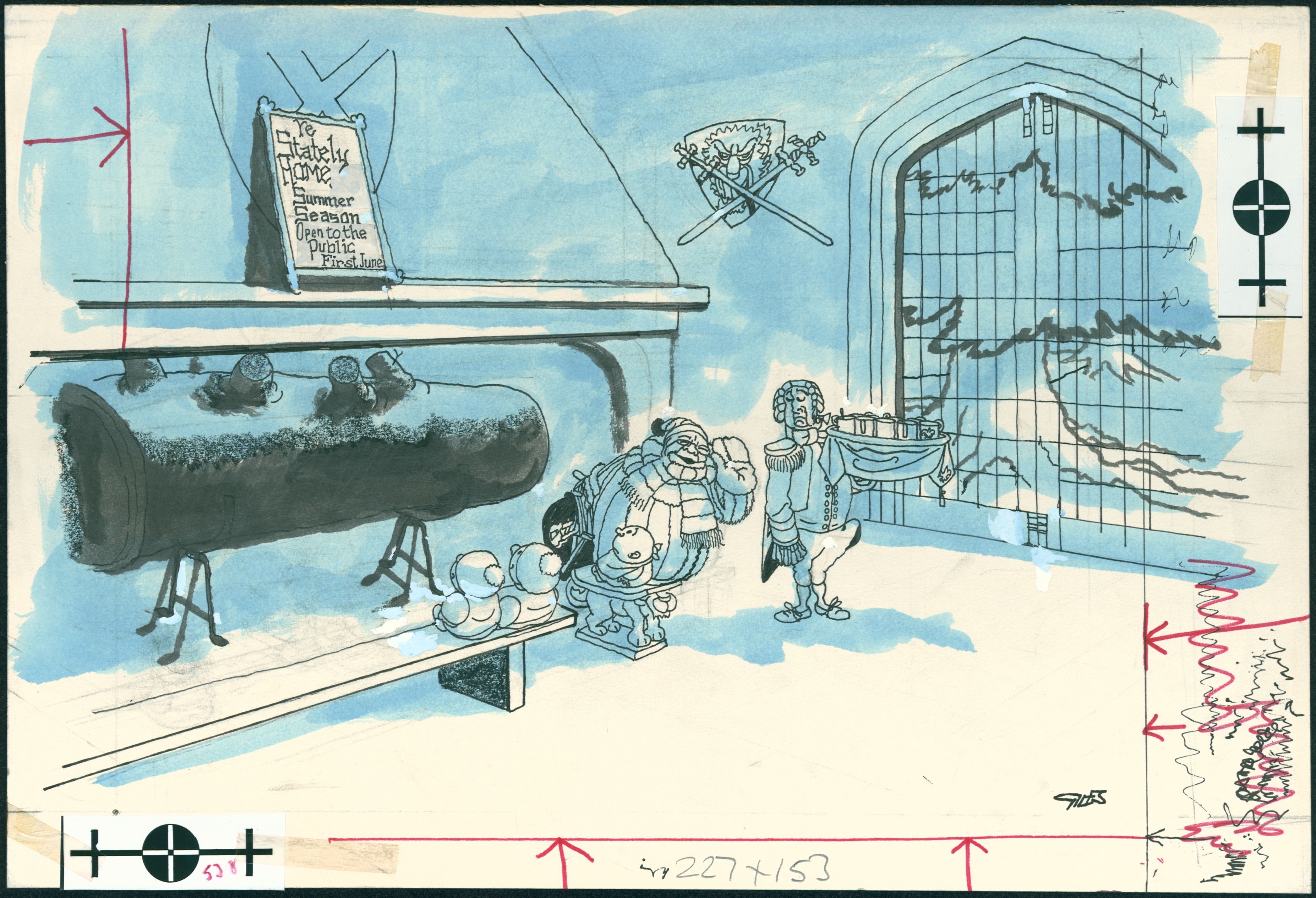
GA5382: “Do you think his Lordship would mind if we put a match to it?”, published by Sunday Express, 02 Jun 1991.
Father
Considering himself the Head of the family (when we all know it’s actually Grandma!), Father was a mild and philosophical character.

GA3862: “St. George to Dragon – I give you ten seconds to get off my new
flower bed – over and out”, published by Sunday Express, 23 Apr 1978.
A firm favourite, appearing in over 1100 cartoons, Father had served in both World Wars and just wanted a quiet life where he could enjoy sports and relax. He was a working Dad, although we were never given an explanation of what exactly he did for a living! His given name was also George Giles, but being that there are two other George’s in the family, he was always referred to as Father. He was imagined to be 60 years old, and was also, of course, a Grandfather.

Left – GA5389: “1914-18 found him winning his first war”, published by Daily Express, 05 Jan 1950.
Right – GAN1798: “And this comment from your music teacher – ‘I hope your boy enjoys his holiday as much as I’m going to enjoy mine’…”, published by Sunday Express, 21 Jul 1968.
In the early days of the Family cartoons Father was depicted wearing the typically working class garb of belt and braces. In later years though this changed with the times to a jumper and slacks.
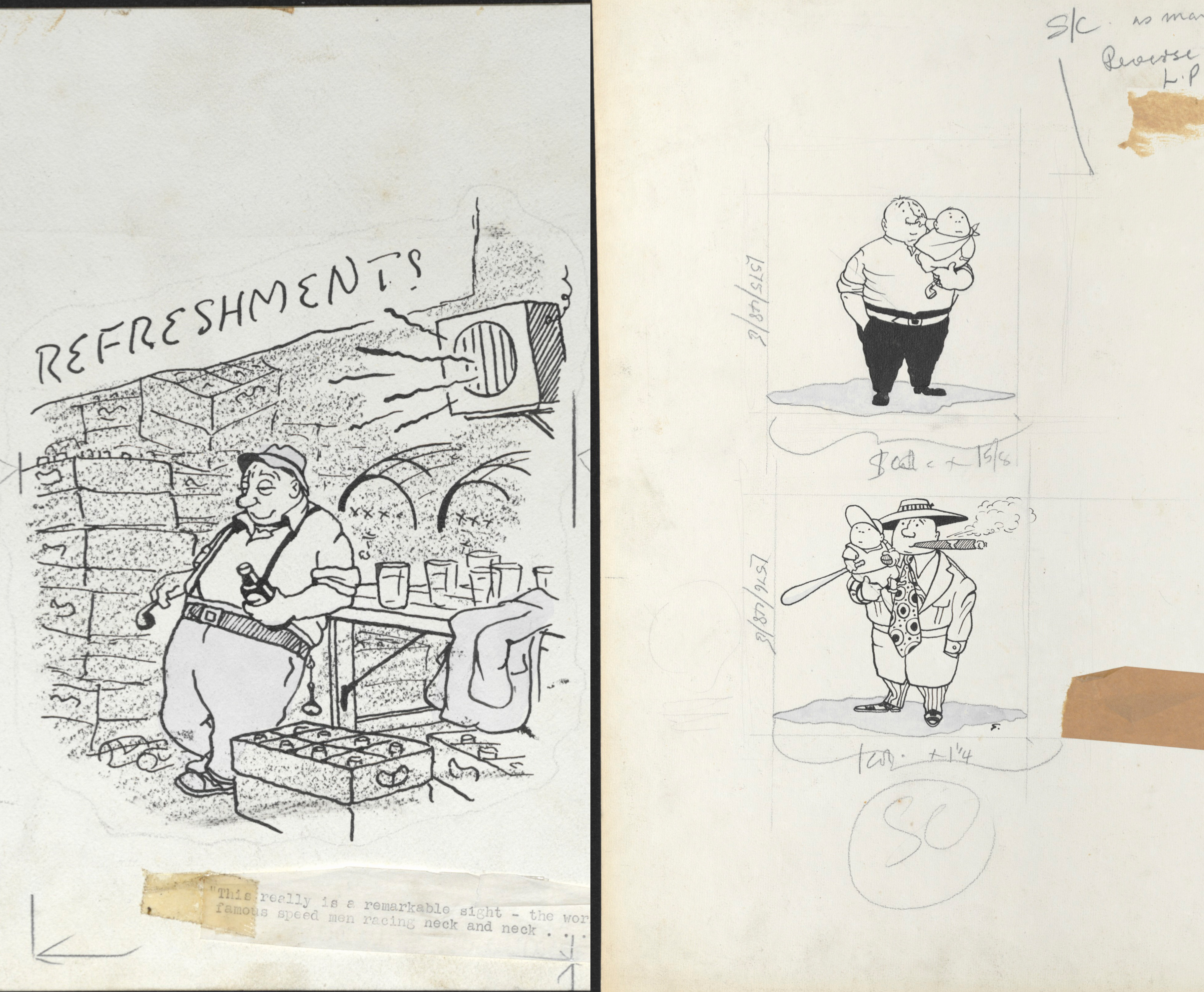
Left – GA0420: “This really is a remarkable sight – the world’s most famous speed men racing neck and neck ……”, published by Daily Express, 20 Aug 1949.
Right – GA0282: [No caption], published by Daily Express, 31 May 1948.
The final cartoon featuring Father in the archive shows him in bed, barely visible, being woken up by Ernie. Ernie is breaking it to him that “Some people are here who say Grandma has rented the house to them for Wimbledon fortnight”. Alas, a quiet life was not to be had!

GA5383: “Some people are here who say Grandma has rented the house to them for Wimbledon fortnight”, published by Sunday Express, 23 Jun 1991.
Mother
Mother is the organised, cheerful, authoritative member of the family who appeared in over 950 of the Family cartoons.

GA5395: “and Mum -“, published by Daily Express, 28 Aug 1947.
We don’t know much about her, except that she should be considered as head of the family. She is matronly, but with a kind face, and can often be found doing the housework, herding the children or serving the tea.

Left – GAA253058: “In view of his team being knocked out of the Cup yesterday, for goodness sake let him win”, published by Sunday Express, 03 Jan 1971.
Right – GAA415132: “Grandma – explain to man’s best friend that Man has taken the day off to go to Wimbledon”, published by Daily Express, 23 Jun 1987.
Vera & George
George, the eldest son of Mother and Father, was married to Vera, and together they had a son, George Jr. In the early Family cartoons there was elder son, illustrated with an Eton collar and bowtie (seen behind Vera in the image below), but he had disappeared by the time the Family canon was established.
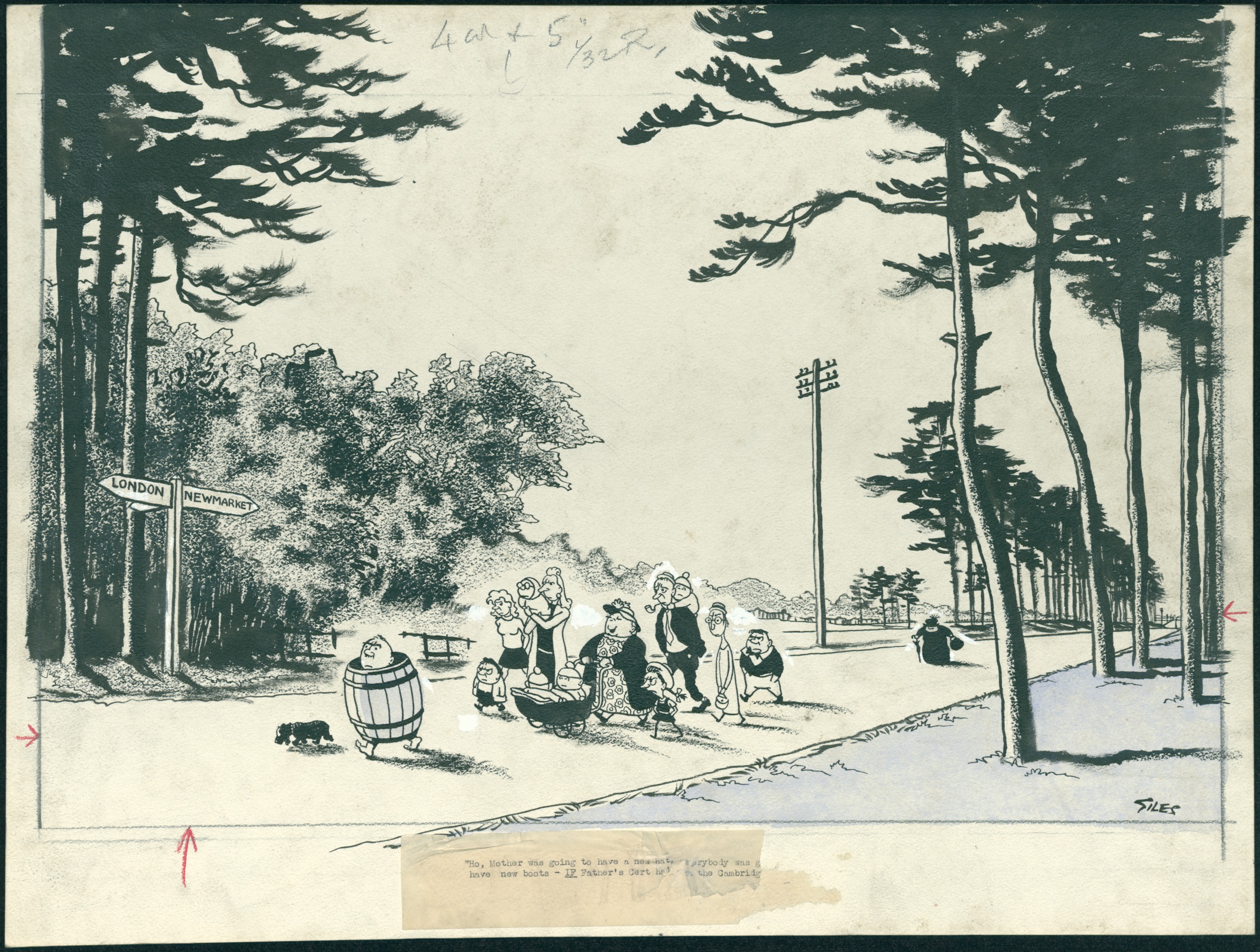
GA0226: “Ho! Mother was going to have a new hat, everybody was going to have new boots – if father’s cert had won the Cambridgeshire”, published by Daily Express, 26 Oct 1947.
George could usually be found smoking a pipe and reading a book. He rarely spoke, and was quite absent in the later Family cartoons, only featuring in around 400 in total. He could often be spotted in the background hunched over in a chair, dawdling behind the rest of the family, or with his back to the viewer not noticing the chaos around him.

Left – GA5398: “and our eldest son George and his baby”, published by Daily Express, 28 Aug 1947.
Middle – GA5118: [no caption], published by Sunday Express, 01 Nov 1987.
Right – GA5388: ” Before long a beautiful thing came into his life – his first son, George”, published by Daily Express, 05 Jan 1950.
Vera on the other hand, appearing in over 750 cartoons, was often found at Grandma’s side, looking rather ill and put upon. She was originally depicted as a bit of an intellectual, reading poetry alongside George, but as time wore on she became more meek and frail, frequently ill with a cold, constantly worrying, or clutching a bottle of aspirin!
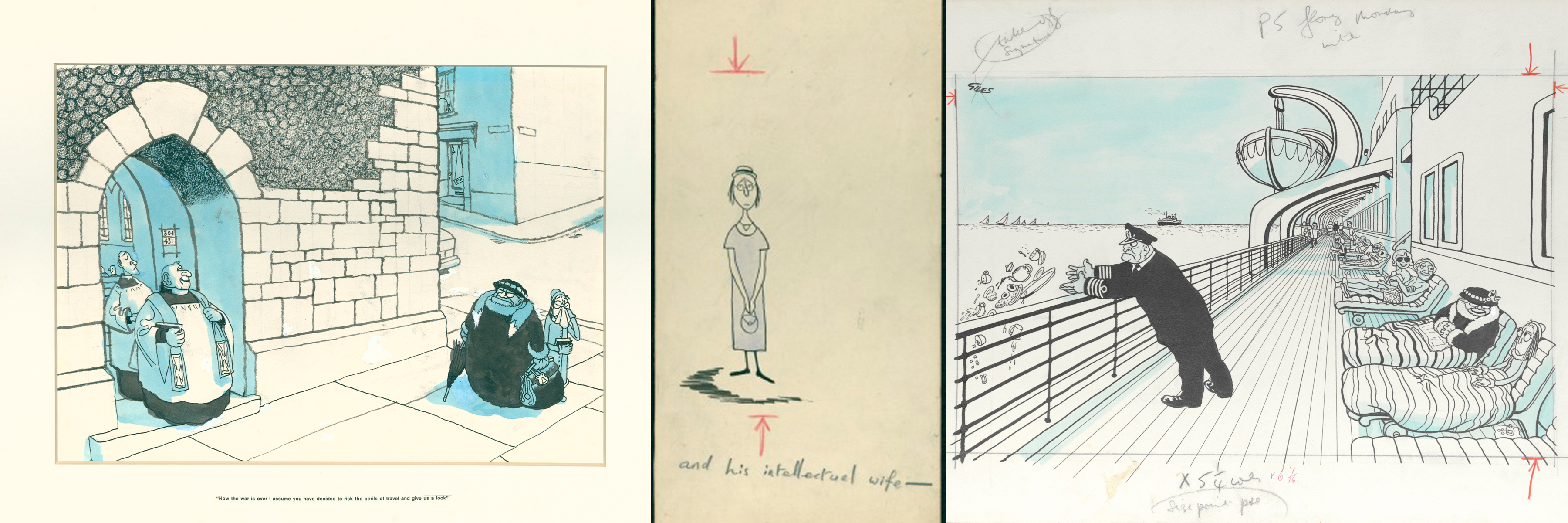
Left – GA5778: “Now the war is over I assume you have decided to risk the perils of travel and give us a look”, published by Sunday Express, 03 Mar 1991.
Middle – GA5399: ” and his intellectual wife”, published by Daily Express, 28 Aug 1947.
Right – GA2070: “I’ve told you before not to give your tray to anyone in a uniform. They’re not all stewards”, published by Daily Express, 15 Jan 1964.
The kids: George Jr, the Twins and Ernie (and Stinker!)
It’s not tricky to spot the kids in the cartoons of the Giles Family; after all they appeared in over 900 of them! Miniscule in stature, the kids were the often chaotic, and always cheeky, element of the Family.

GA1378: “Fire Brigade? We wish to report we’ve just launched Sputnik 3”, published by Sunday Express, 10 Nov 1957.
The youngest child of Mother and Father, Ernie, was referred to by Giles as “the most dangerous element of the family”! He was often the centre of the chaos, with a weapon of some sort in his hand, and followed by his gang of tiny troublemakers. He was a reincarnation of an earlier Giles character of the same name, who appeared in a comic strip in the early 1940s. In looks, he is a miniature version of Father and he became less anarchic over time, with the chaotic torch being handed to his friend, Stinker, in later years.
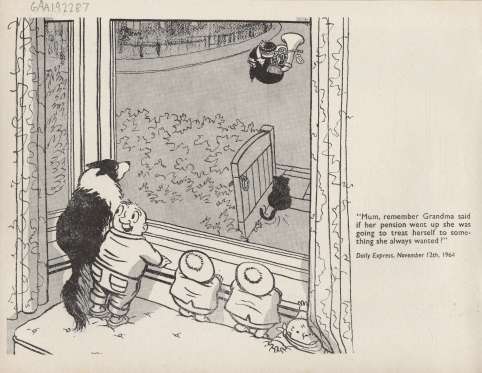
GAA192287: “Mum, remember Grandma said if her pension went up she was going
to treat herself to something she always wanted?”, published by Daily Express, 12 Nov 1964.
Talking of Stinker…
With his trademark black hair, Stinker was not a relative of the family but was a strong presence, appearing in over 800 cartoons, even going on holiday with the family. Stinker was of course a nickname, his actual name being Larry Wilmott. He never spoke but was well loved by many fans, with even Giles speaking of him as “a favourite in a way”.

Left – GAPC0355: Giles cartoon on the cover of the Ipswich Sixth Form rag magazine (Volume 1, 1980), with caption: “We care – do you?”, published by Ipswich Sixth Form, 1980.
Right – GAPC0244: Part of cover cartoon in booklet ‘Safe hands on the Land’, published by The Royal Society for the Prevention of Accidents, published by Royal Society for the Prevention of Accidents, 1956.
The smallest of the grandchildren is George Jnr. Baby George often looks bewildered, is usually wearing a bib around his neck, and is seemingly without legs, having only little feet. In a number of images he appears to be staring out at the viewer, breaking “the 4th wall” of the cartoons. Perhaps he is pleading for aid, or maybe it’s his way of saying “Really?!?!”

GA1147: “This delegation wishes to register a strong protest about Father Christmases who come home late and forget to fill our socks”, published by Sunday Express, 25 Dec 1955.
The twins, Laurence and Ralph (arguably the cutest of the group), are always found together in their matching outfits, and were named after their mother Ann’s favourite actors, Sir Laurence Olivier and Sir Ralph Richardson.
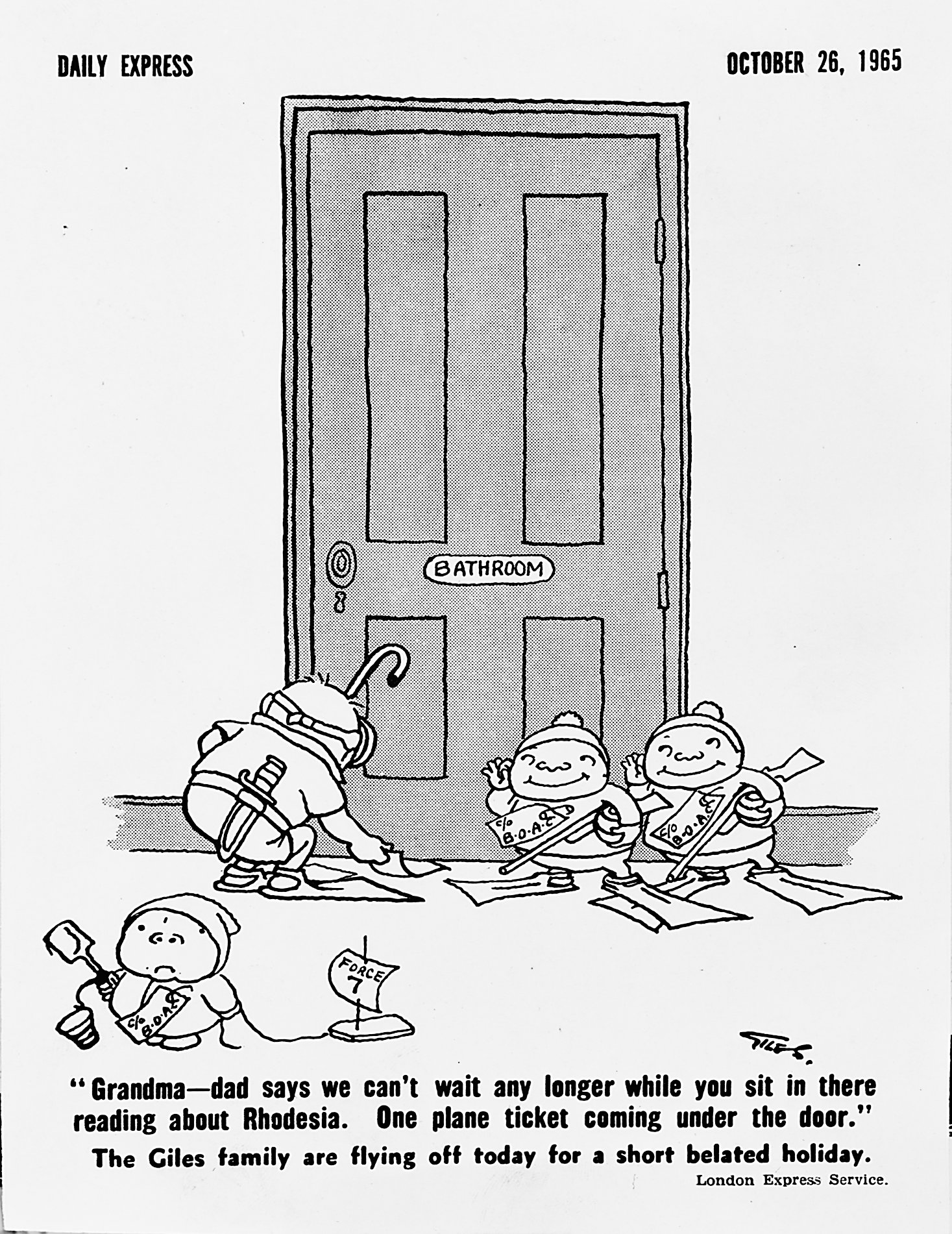
GAN1411: “Grandma – dad says we can’t wait any longer while you sit in there reading about Rhodesia. One plane ticket coming under the door”, published by Daily Express, 26 Oct 1965.
Other characters
The sisters
Ann (occasionally spelled ‘Anne’) is the eldest daughter of Mother and Father. Appearing in over 450 cartoons, she is mother to the twins, Laurence and Ralph. Being the eldest, Ann is the tallest of the daughters and can usually be spotted by her distinctive quaffed fringe.
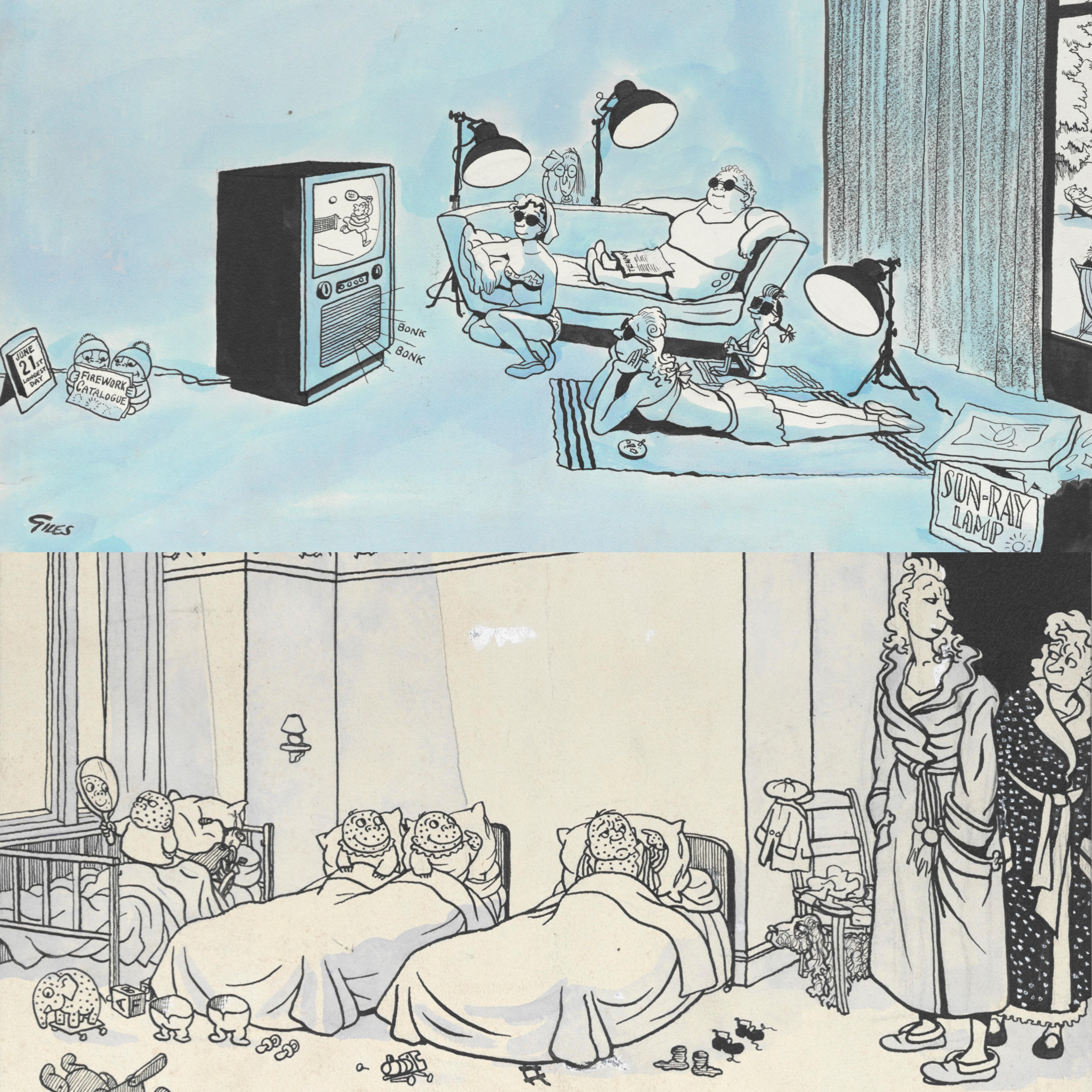
Top – GA1668: “Flaming June”, published by Daily Express, 21 Jun 1960.
Bottom – GA0718: “And only last night Dad was saying whatever the Budget result things couldn’t get much worse”, published by Daily Express, 11 Mar 1952.
The father of Ann’s twins is absent, and also could be considered in dispute! A number of the Family cartoons suggest that he may have been an American G.I., however in the very early cartoons of 1947 we see what we could presume to be him, a tall man covering his eyes on the stairs…

GA0235: “If 4,298,700 tons of coal in one week isn’t a good enough exuse to celebrate and buy myself a new hat, what is?”, published by Daily Express, 11 Dec 1947.
Carol is the well behaved, often relaxed and smiling, middle daughter. She can usually be seen reading a magazine or lounging about the house.
Bridget is the youngest daughter of Mother and Father. Often wearing a gymslip or school uniform with her dark hair in a plait, she appeared in less than 600 cartoons. She is only slightly taller than her young nephews, but in comparison is incredibly gangly, as opposed to their bouncier, rounded stature.

Left – “Get in the queue if you want to take advantage of the new reduced telephone charges to the United States”, published by Daily Express, 02 Feb 1967.
Middle – GA5396: “the girls”, published by Daily Express, 28 Aug 1947.
Right – GA3602: “Thank goodness he didn’t win – we’d never have got him up on the top one”, published by Sunday Express, 25 Jul 1976.
It’s been noted that on at least two occasions Giles switched the names of Carol and Bridget, presumably accidentally, in the cartoons, such as in this example…

GA5777: “You’d better agree to a ‘cooling-off’ period before you meet Bridget’s latest boyfriend”, published by Sunday Express, 23 Apr 1972.
In the early days of the Family cartoons there was an appearance of an American daughter, seen in the cartoon below. It’s been suggested that she married an American GI and moved to America with him after the war.

GA0302: “Well, folks – when we arrived from England, Wally pointed out that there were other things in America besides skyscrapers”, published by Daily Express, 03 Aug 1948.
Chalkie
Chalkie the schoolmaster appeared in c.400 cartoons and was a sarcastic, skeletal looking figure. He was inspired by Giles’ real life school teacher, Mr Chalk, who Giles harassed along with his gang of friends whilst at Barnsbury Park School in London.

Left – GA2046: “Any Prime Minister who looks that much like Chalkie’s had my vote”, published by Daily Express, 24 Oct 1963.
Right – GA1742: “All this fuss about schoolchildren being compelled to wear uniforms would surely be solved if only the head and teachers had to wear the uniform as well.” – Reader’s letter, published by Daily Express, 09 Mar 1961.
The pets
The Giles Family had a number of pets over the years, there was Attila the Hun (the parrot), Butch and Rush (the dogs, an Airedale Terrier and Border Collie respectively), Natalie (the cat), and Randy (the fish).

GAA111405: “I’d show him who’s favourite in this house if they ever let him out for a fly round the room”, published by Daily Express, 15 Sep 1957.

Various crops from images refs GA3134, GA4247, GA5405, GAA091103, GACE00302, published by Express Newspapers.
Some images in this blog post have been cropped. Please see archive.cartoons.ac.uk and search for the reference number cited for the full image.
